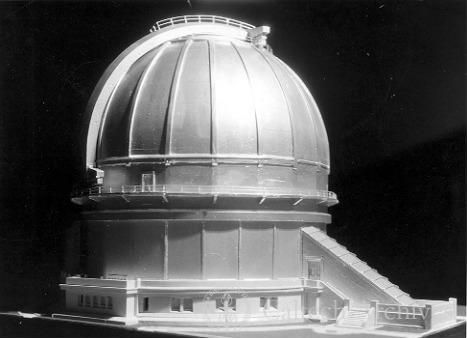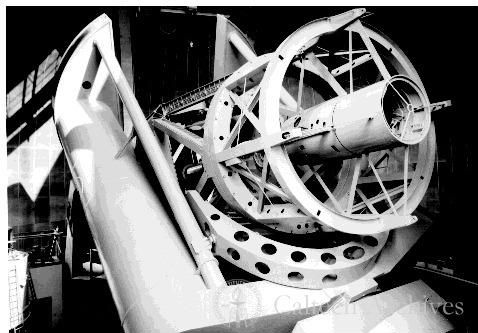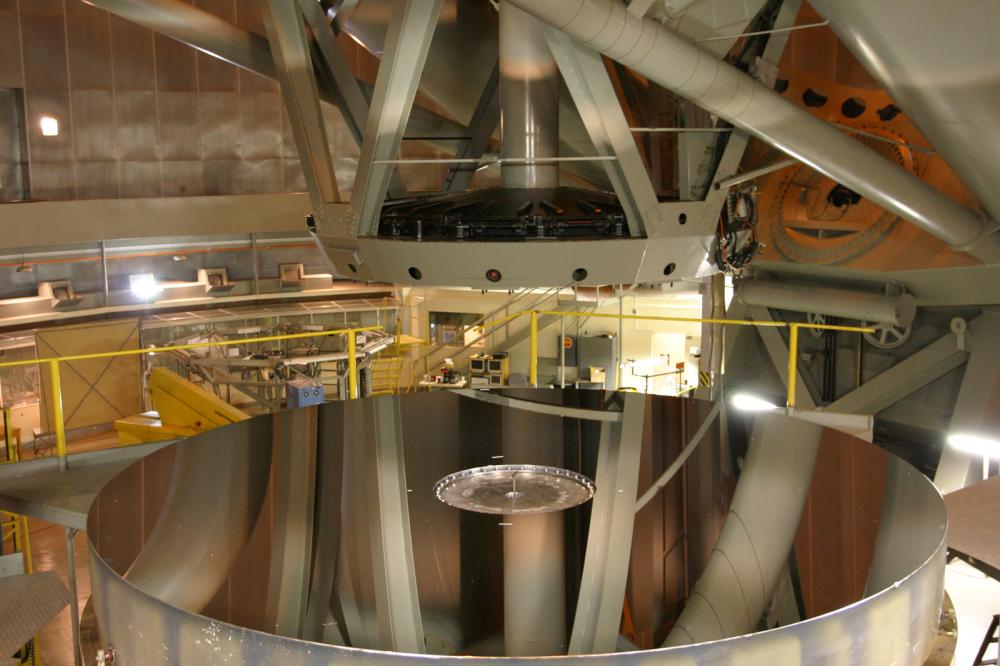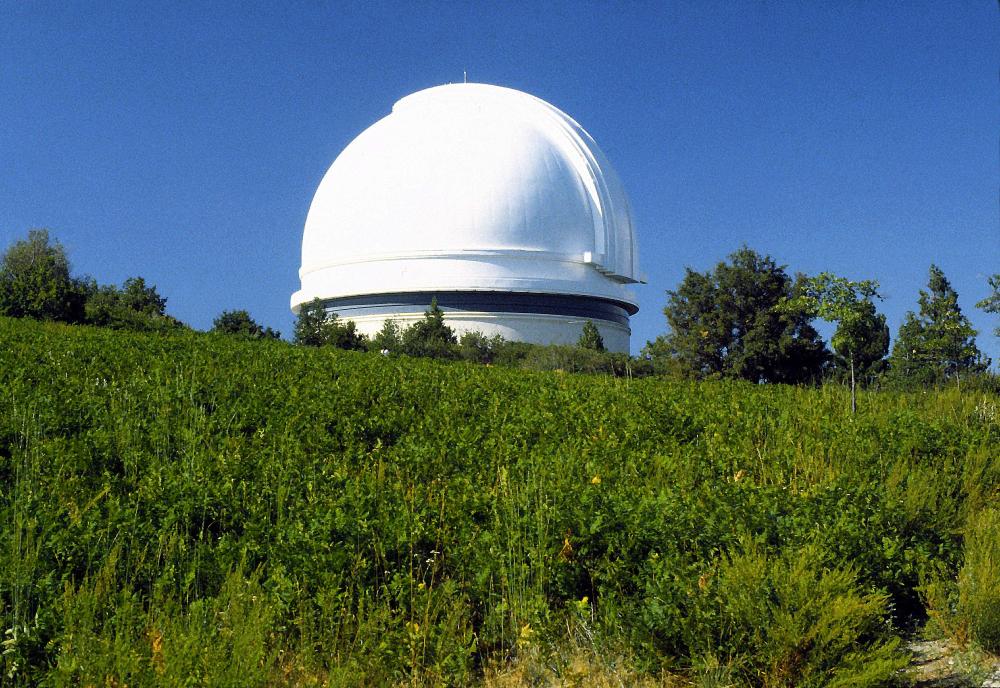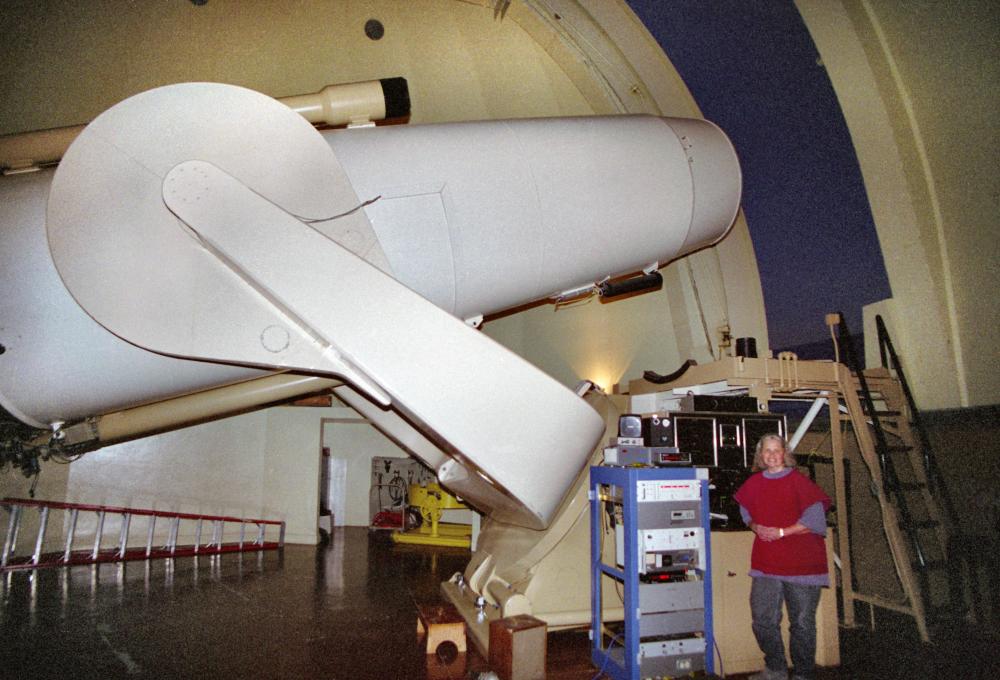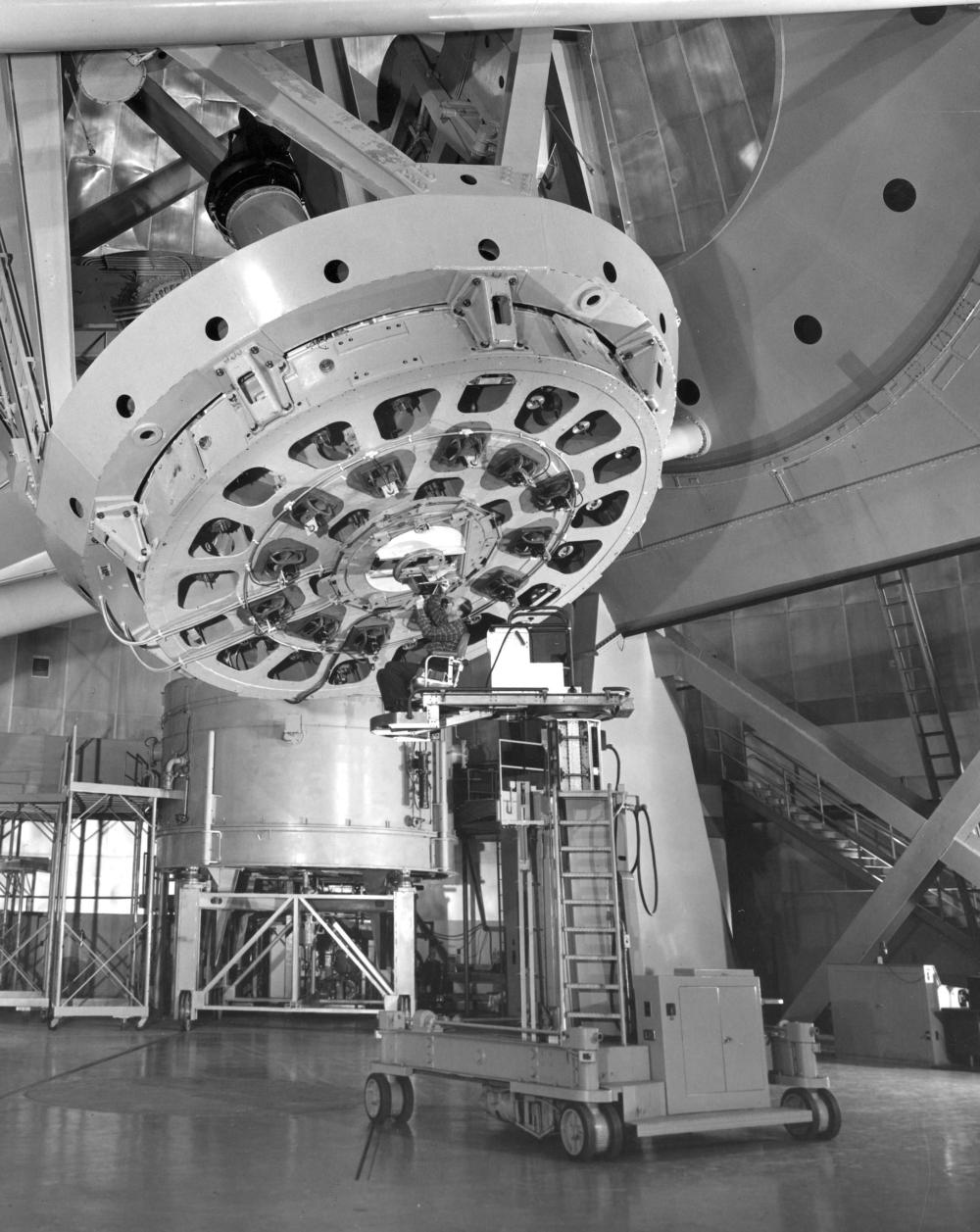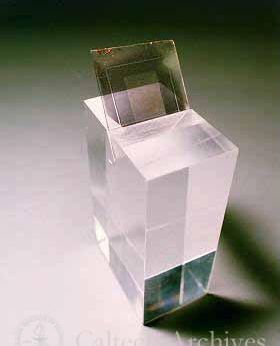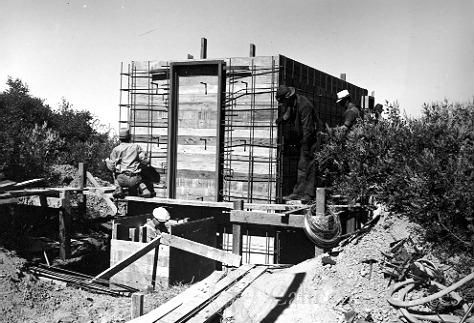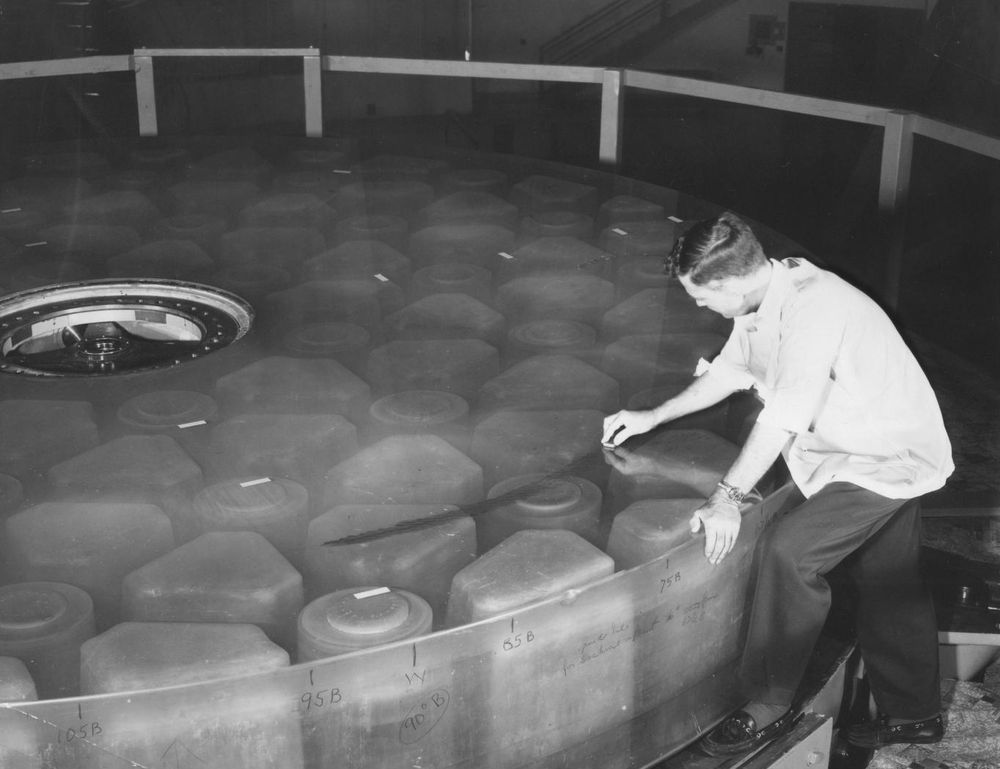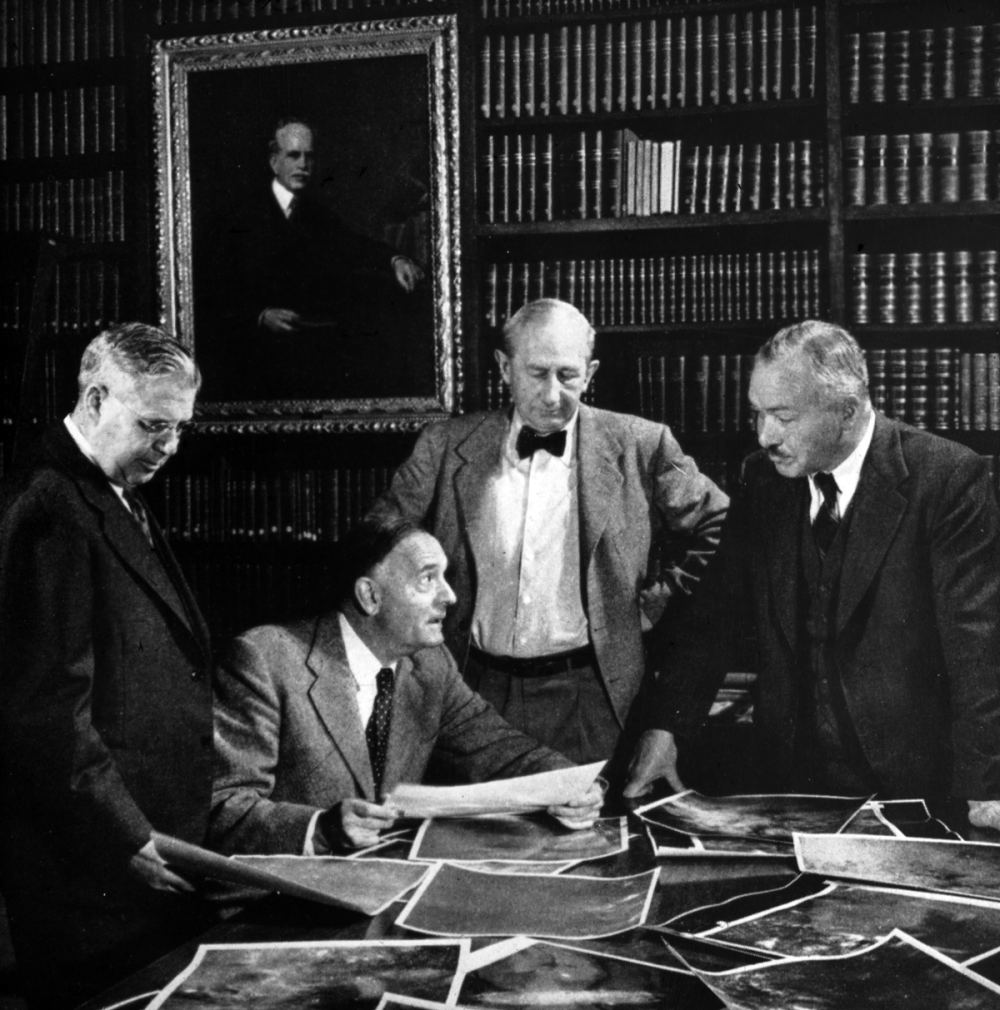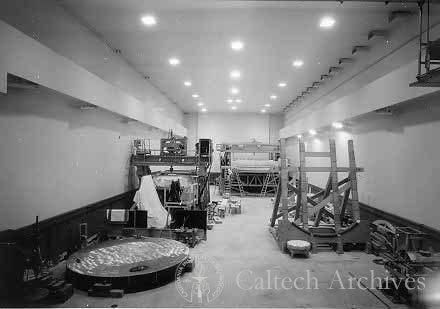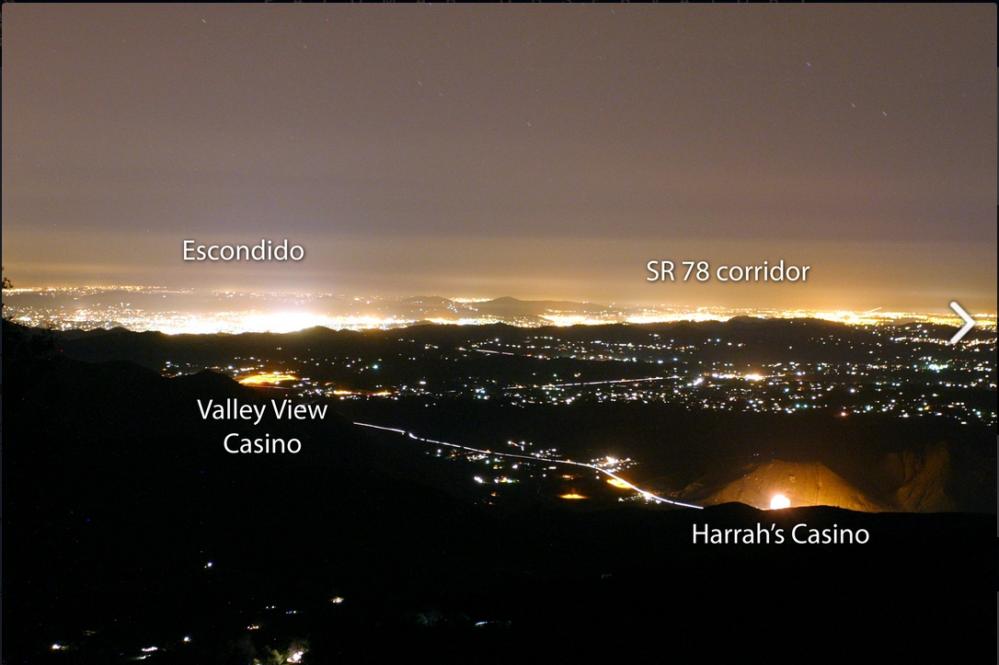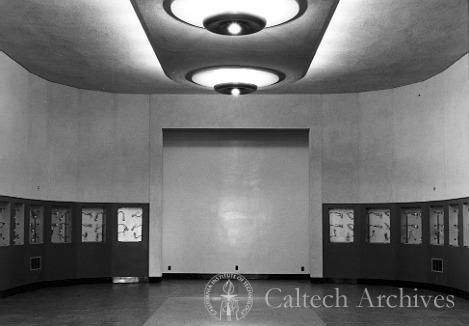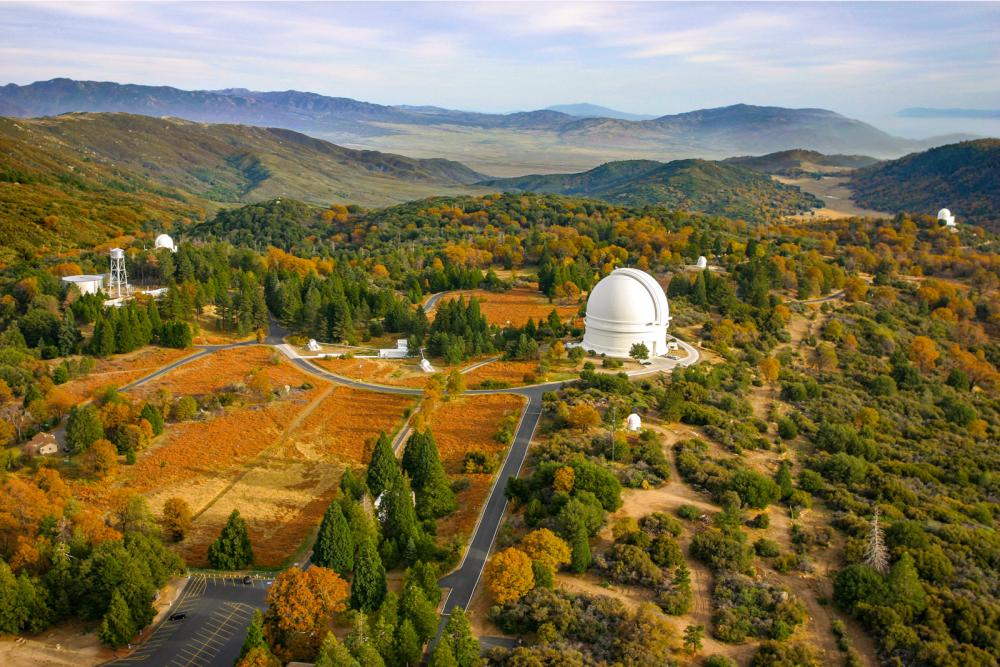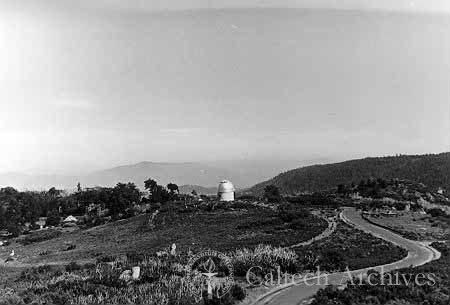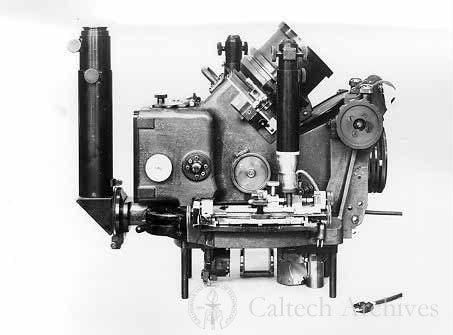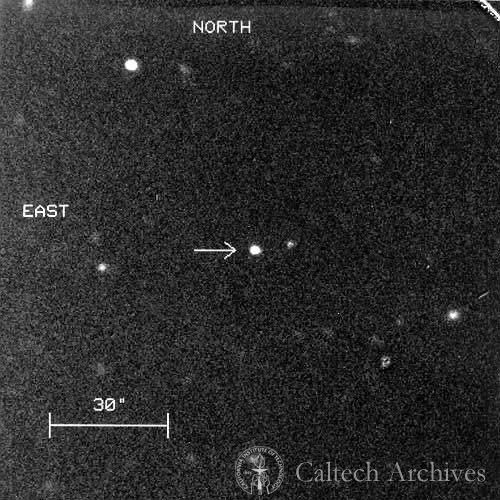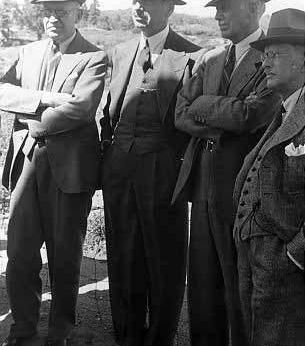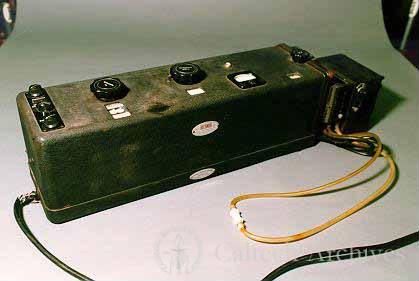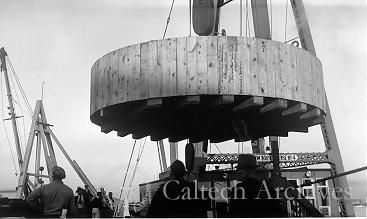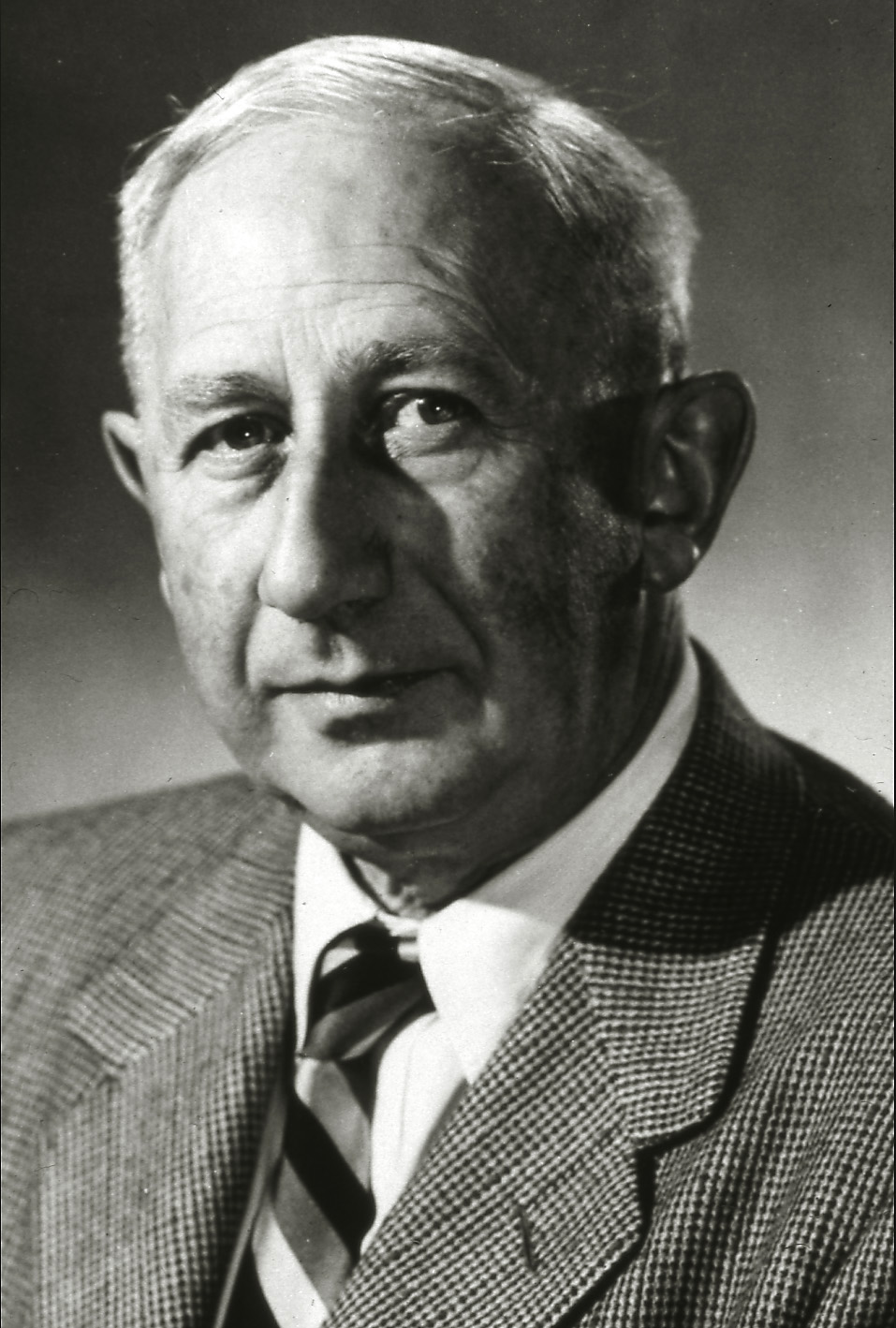
Category of Astronomical Heritage: tangible immovable
Palomar Observatory, Palomar Mountain, California, USA

Description
Geographical position
Palomar Observatory, 35899 Canfield Road, Palomar Mountain, California CA 92060-0200, USA
See also:
- California Institute of Technology (Caltech), Optical Observatories, 1200 East California Blvd., MC 11-17, Pasadena, California 91125, USA
- Digitized Sky Survey (DSS) at Palomar Observatory (IAU code 261)
- Near-Earth Asteroid Tracking (NEAT) at Palomar Observatory (IAU code 644)
See also: Observatories connected to George Ellery Hale:
- Kenwood Astrophysical Observatory, Chicago
- Yerkes Observatory (1897)
- Mount Wilson Observatory (1904)
- Palomar Observatory (1928/1948)
- Hale Solar Laboratory, Pasadena (1923)
Location
Latitude 33°21'23'' N, Longitude 116°51'54'' W, Elevation 1712 m above mean sea level.
IAU observatory code
675
Description of (scientific/cultural/natural) heritage
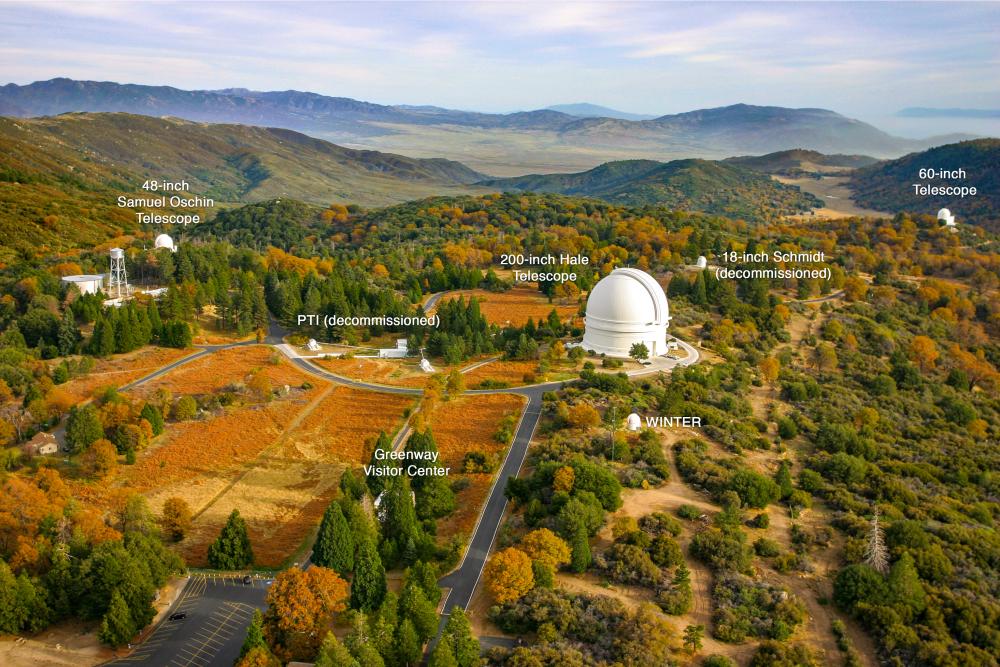
Fig. 1. Aerial view of Palomar Observatory, labels indicate the main observatory buildings (Palomar/Caltech)
The Palomar Observatory (Palomar Mountain 1706m) is near San Diego County in California, and is operated by the California Institute of Technology (Caltech). The astronomy park including buffer zones covers an area of 1,050 hectares = 10.5 km².
The early days of Palomar Observatory -- Construction of the 200-inch (5.1m) Reflecting Telescope
The 200-inch (5.1m) Reflecting Telescope was proposed by George Ellery Hale (1868--1938) in 1928.
Hale was responsible for the construction of the famous four large telescopes, in addition, he also found the sponsors: the 1.02-m (40-inch) refracting telescope at Yerkes Observatory (1897), 1.5-m (60-inch) Hale reflecting telescope (mirror blank, Saint-Gobain, Paris, 1896) at Mount Wilson Observatory (1908), 2.5-m (100-inch) Hooker reflecting telescope at Mount Wilson (1917) -- both institutions had the largest telescope in the world -- and now he wanted to have a reflector of double size compared with the Hooker.
The Rockefeller Foundation was gained as sponsor, and the project could start. A significant amount of time and resources went into assessing the viability of a large fused quartz mirror. When that proved unworkable, then the Corning Glasworks, New York, began their work on October 15, 1931, and introduced Pyrex.
George V. McCauley (1882--1976) was responsible for the casting (the mirror had to be cast twice), slowly cooling and annealing of the mirror blank, finished in December 1934 (cf. Mirror casting).

Fig. 2a. 200-inch-Pyrex-Disk after removal of aluminum coating (Palomar/Caltech)
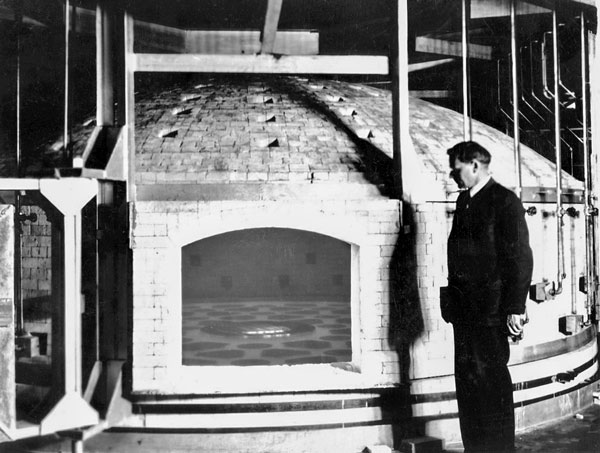
Fig. 2b. 200-inch-Pyrex-mirror in oven after pouring with George V. McCauley (1882--1976), Photo: Ayres A. Stevens, 1934 (Corning Glass Works)
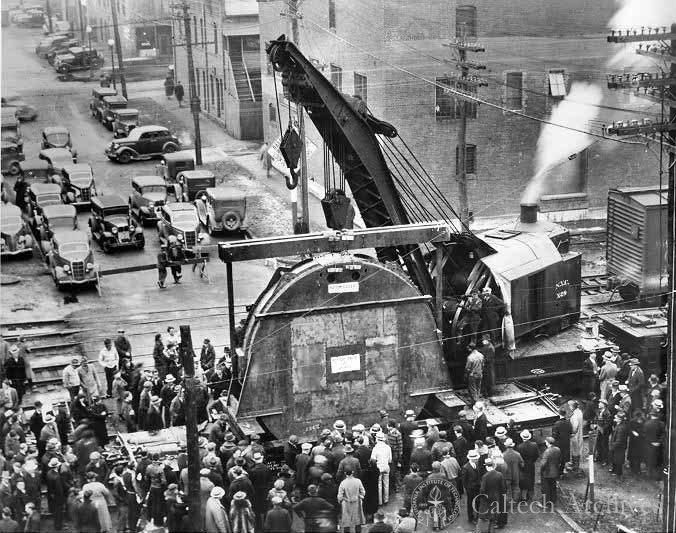
Fig. 2c. 200-inch-Pyrex-disc leaving Corning Glass Works, NY (Caltech Images Collection)
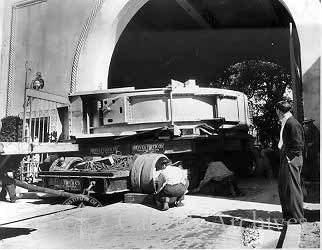
Fig. 2d. Arrival of the 200-inch-Pyrex-mirror in CIT optical shop (Caltech Images Collection)

Fig. 2e. Trucking the aluminizing chamber, 1940 (Caltech Images Collection)
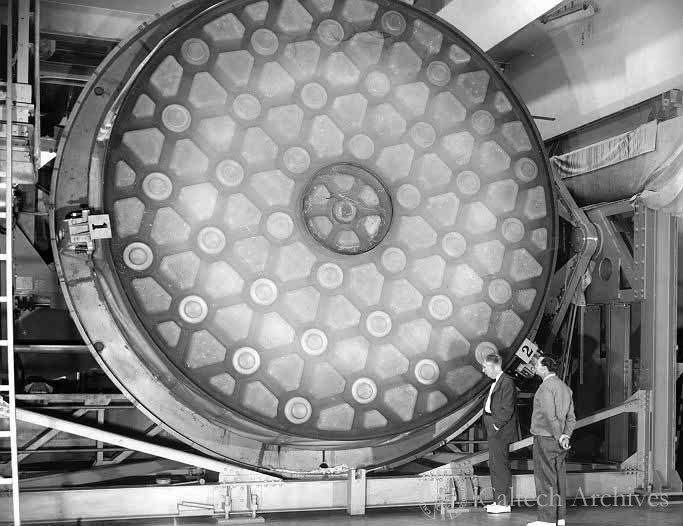
Fig. 2f. Inspecting the 200-inch-mirror (Caltech Images Collection)
Then the mirror blank was transported with the railway across America to Pasadena near Los Angeles (March-April 1936). Here at the California Institute of Technology (Caltech), the mirror was grinded and polished for 11 years by the optician Marcus H. Brown (1893--1961). In November 1947, delayed by WW II, the primary mirror was brought to Palomar Observatory.
George Ellery Hale died in 1938, and could not experience the inauguration in 1948.
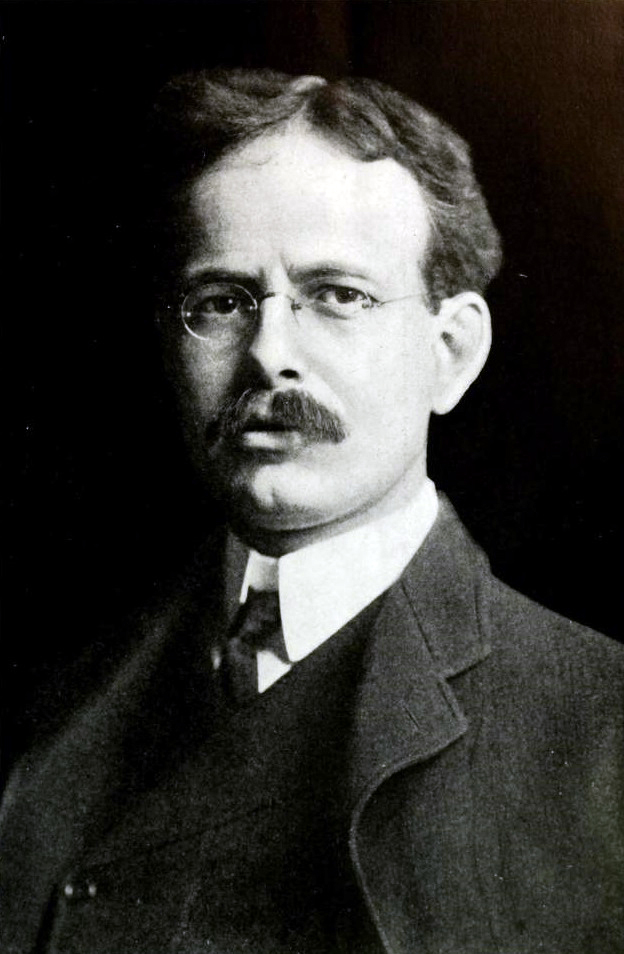
Fig. 3a. George Ellery Hale (1868--1938) (CC, University of Chicago Photographic Archive)
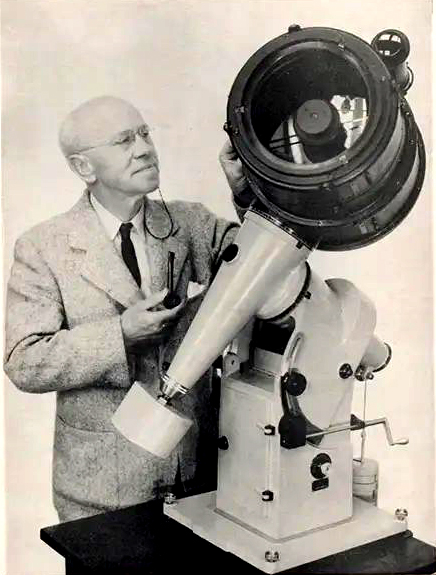
Fig. 3b. Russell W. Porter (1871--1949) (Linda Hall Library)
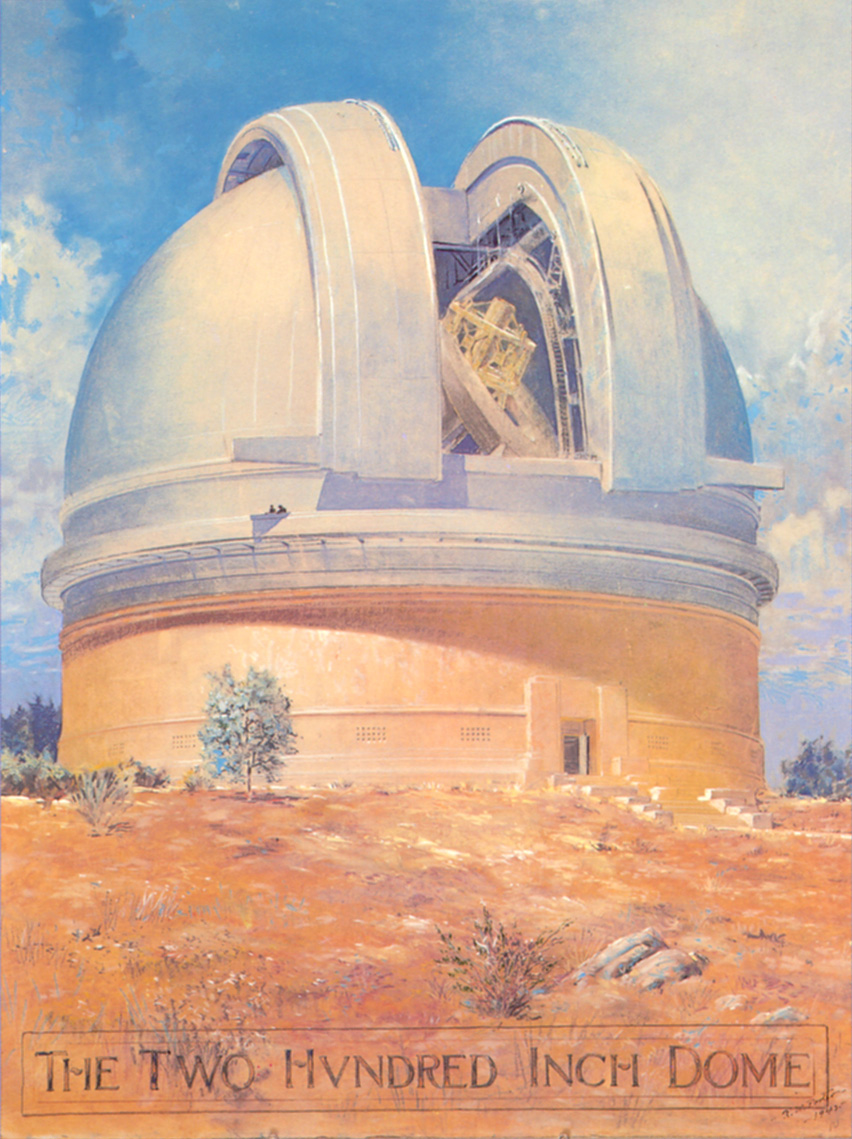
Fig. 3c. Pastel of the Dome of the 200-inch-Hale-Telescope, Russell W. Porter, 1942 (Caltech Archives)

Fig. 3d. 200-inch-Hale-Telescope, designed in Art Deco style (Palomar/Caltech)
Russell W. Porter (1871--1949), architect, engineer and amateur astronomer, designed the Palomar Observatory buildings (18-inch Schmidt, Hale telescope domes, Samuel Oschin Schmidt dome, 1930s) in Art Deco architectural style (also the machine/instrument and optical shops at Caltech); Art Deco was widespread in Southern California in the 1920/30s.
"Aside from the principle that a building should express the functions of the mechanism that it covers, [...] I have felt the importance of expressing extreme simplicity along with the appearance of permanency."
Russell W. Porter: Letter to Observatory Council, 1936
(Personal Papers of Bruce Rule, Caltech Archives, Architecture of Palomar Observatory).

Fig. 4a. Dedication of the 200-inch-Hale-Telescope, June 3, 1948 (Caltech Images Collection)

Fig. 4b. 200-inch-Hale-Telescope from the east (Palomar/Caltech)
Discoveries at Palomar Observatory

Fig. 5a. Dome of the 18-inch (46cm) Schmidt Camera (1936), (Caltech Images Collection)

Fig. 5b. 18-inch (46cm) Schmidt Camera (1936), photo 1939 (Caltech Images Collection)
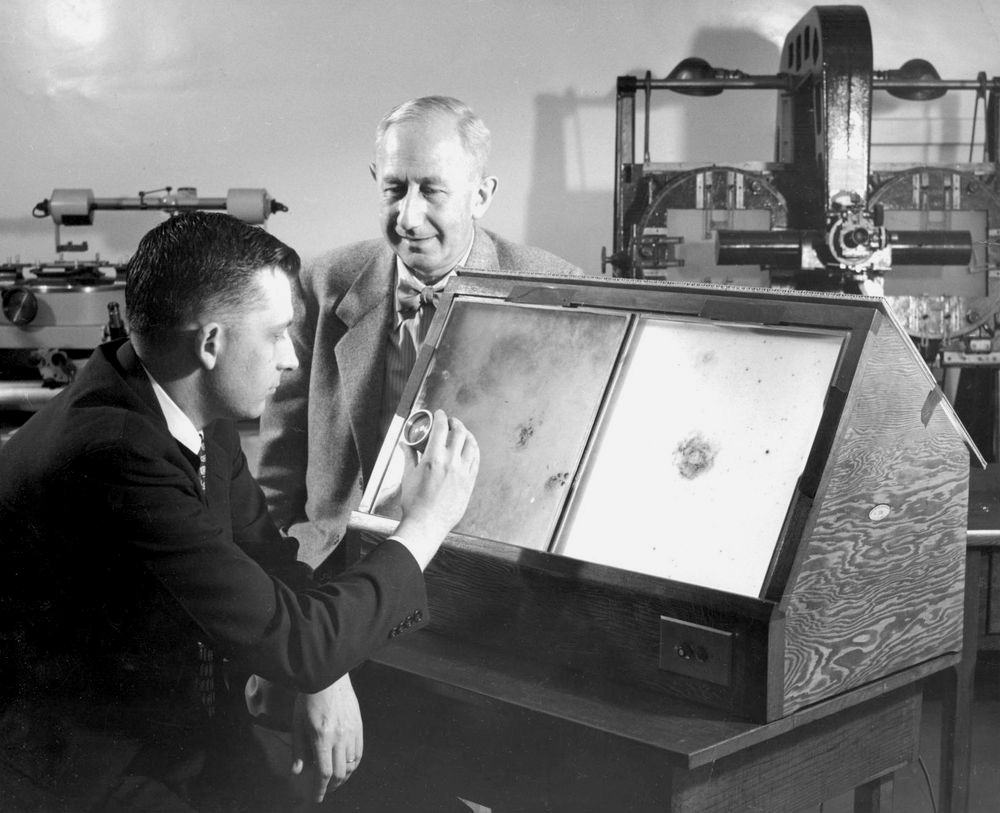
Fig. 5c. Albert George Wilson (1918--2012) & Walter Baade (1893--1960) checking photographic plates (1949) exposed with the 18-inch (46cm) Schmidt Camera of Palomar Observatory (Caltech Images Collection)

Fig. 5d. Fritz Zwicky (1898--1974) observing with the 18-inch (46cm) Schmidt Camera (Edison R. Hoge Photograph Collection, Caltech Archives)
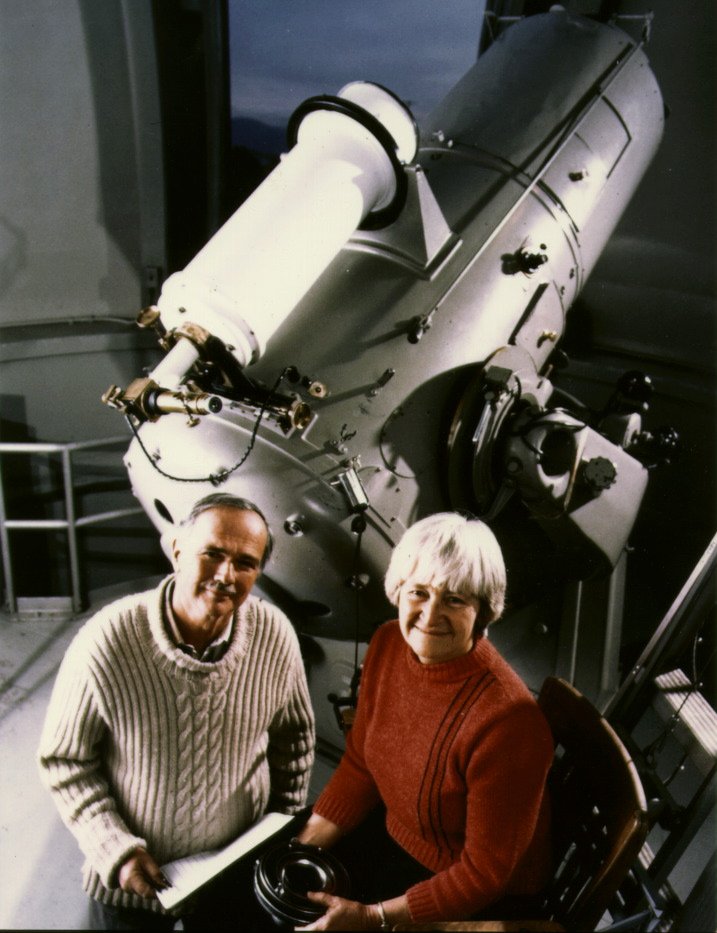
Fig. 5e. Carolyn Jean Spellmann Shoemaker (1929--2021) & Eugene Merle Shoemaker (1928--1997) used the 18-inch (46cm) Schmidt Camera for observing Near-Earth Objects and comets (Caltech Images Collection)
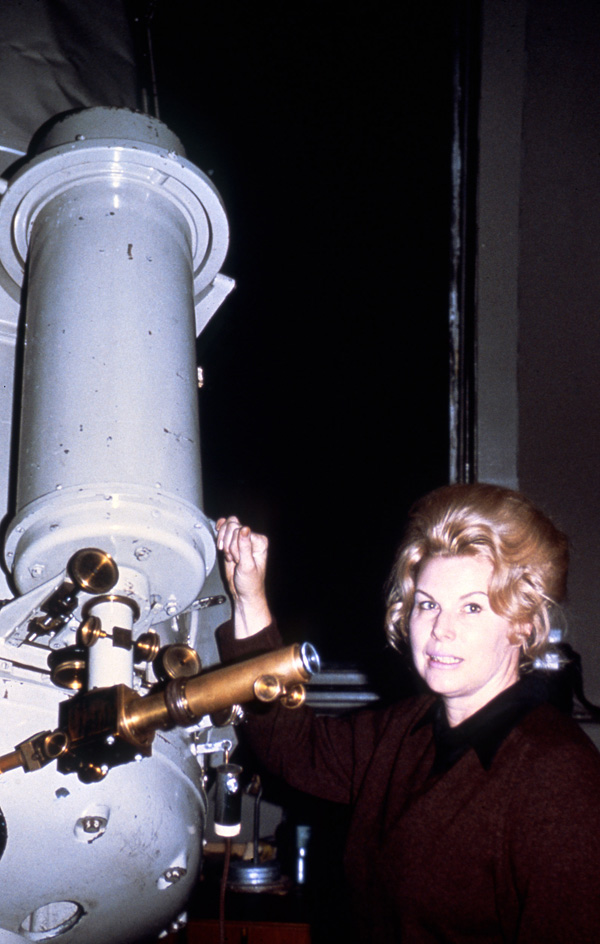
Fig. 5f. Helin Eleanor observing (Helin Family Estate)

Fig. 5g. Comets discovered with the 18-inch (46cm) Schmidt Camera (Caltech Archives)
18-inch (46cm) Schmidt Camera (1936)
The observations started already with the 18-inch (46cm) Schmidt Camera (1936), developed to demonstrate the Schmidt concept, used by Fritz Zwicky (1898--1974) and Walter Baade (1893--1960) for the discovery of over 100 Supernovae in other galaxies; they had introduced Supernovae as a new category of astronomical objects.
In 1933, Walter Baade (1893--1960), since 1931 as astronomer at Mount Wilson Observatory, and the Swiss astronomer Fritz Zwicky (1898--1974), since 1925 at Caltech, coined the term "supernova" after Baade introduced already in 1927 the term "main nova" as a new category of extremely luminous celestial objects (Wolfschmidt: Baade, 2022). An important example was the (Super)Nova S 1885 And in M 31, discovered in 1885. In 1934, both had the innovative idea that a collaps of a massive star creates a supernova, whereby the shell is ejected, and a neutron star forms in the center. In 1933, both started a systematic search for supernovae, Baade used the 2.5-m-Hooker at Mount Wilson Observatory, the largest reflecting telescope in the world, and Zwicky used the 18-inch (46cm) Schmidt Camera at the Palomar Observatory. In 1934, Baade had already discovered the supernova Herculis 1934 (published in 1940). In 1937, they discovered the supernovae IC4182 and NGC 1003 (Baade & Zwicky, 1938). Zwicky discovered 19 supernovae (1936 to 1942). By analyzing the light curves and spectra, he introduced also the term supernova type I and II. In addition, Zwicky suggested using supernova explosions as standard candles for measuring distances. Zwicky restarted the search for supernovae in 1956. In 1961, an IAU Committee for research on supernovae was formed within IAU Commission 28. This quickly enlarged the number of about 100 supernovae by 42 from 1961 until 1963 to a total of 140 (Zwicky 1964).
Later the 18-inch (46cm) Schmidt Camera (Decommissioned Telescopes) was used by Carolyn Jean Spellmann Shoemaker (1929--2021), Eugene Merle Shoemaker (1928--1997) and David Howard Levy (*1948) for the study of Near-Earth Objects (NEO), and especially the periodic comet D/1993 F2 Shoemaker-Levy 9 was discovered in 1993, which had a spectacular collision with Jupiter in July 1994. Also Eleanor Francis "Glo" Helin (1932--2009) used this telescope extensively for the detection and study of Near-Earth Objects (cf. Searching the Sky for Dangerous Neighbors).

Fig. 6a. Dome of the 48-inch (1.2m) Samuel Oschin Telescope (1948) (Caltech Images Collection)

Fig. 6b. 48-inch (1.2m) Samuel Oschin Telescope (1948) (Palomar/Caltech)
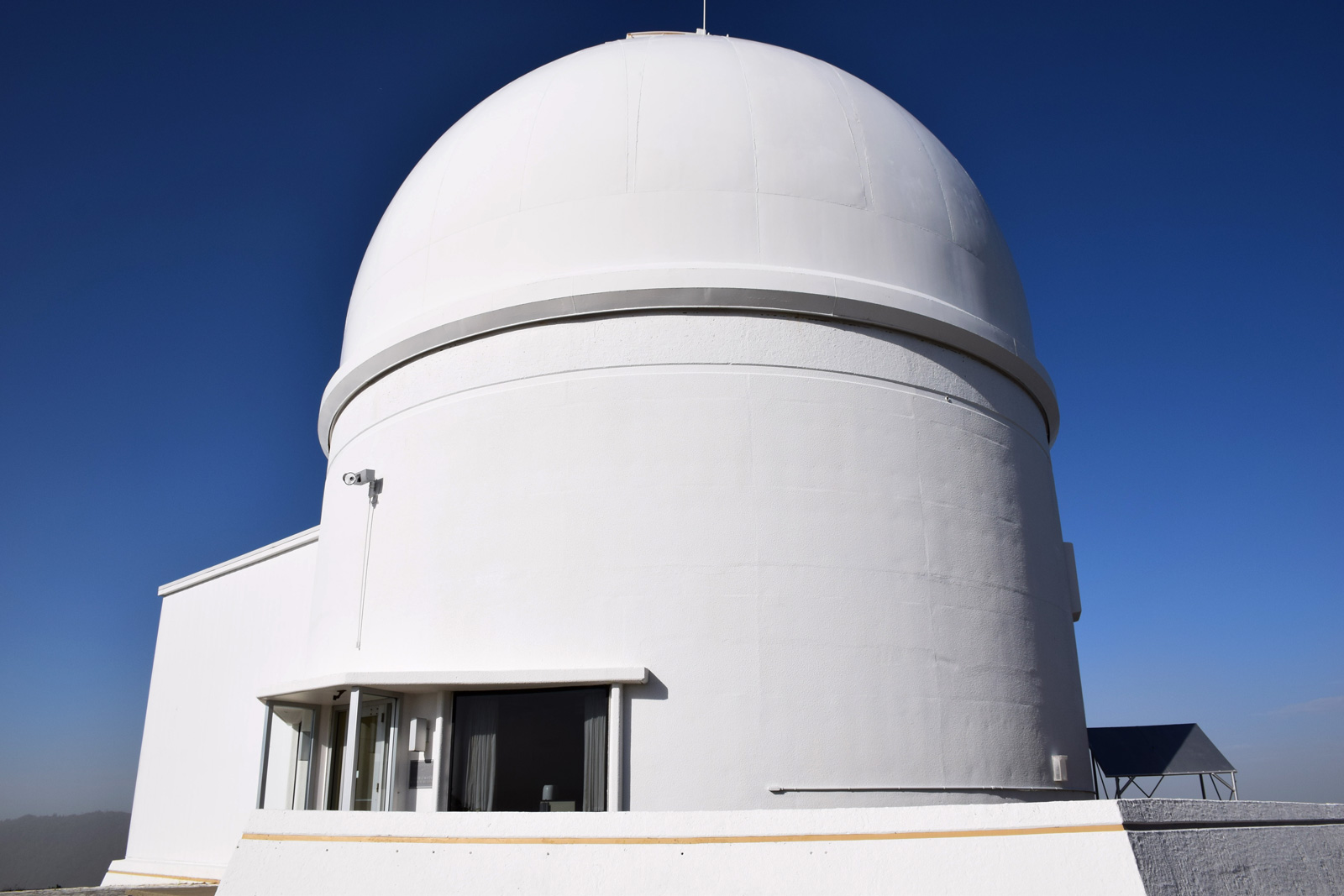
Fig. 6c. Dome of the 60-inch (1.5m) Telescope, Oscar G. Mayer Memorial Building (1969) (Caltech Images Collection)

Fig. 6d. 60-inch (1.5m) Telescope, assembly process in 1969 (Caltech Images Collection)
48-inch (1.2m) Samuel Oschin Telescope (1948) and the 60-inch (1.5m) Telescope (1969)
With the 48-inch (1.2m) Samuel Oschin Telescope (1948), a Schmidt camera (cf. Discoveries with the Samuel Oschin Telescope), the dwarf planets 90377 Sedna (2003) and Eris (2005) were discovered, the large trans-Neptune objects 50,000 Quaoar (2002) and 90482 Orcus (2004), in addition the peculiar Type Ia Supernova SN 2002cx (2002), and six Supernovae (2011) in a distance of 8 billion light years from Earth, whose composition lacks hydrogen.
With the 60-inch-Telescope (1962--1970), Oscar G. Mayer Memorial Building, the first Brown Dwarf, Gliese 229B, was discovered (1994). The brown dwarf, with a mass of 25-65 times that of Jupiter, is a substellar companion to the red dwarf star Gliese 229A in the constellation Lepus.
The 60-inch-Telescope is now used for the ZTF transient followup and classification (The 60-inch (1.5m) Telescope).
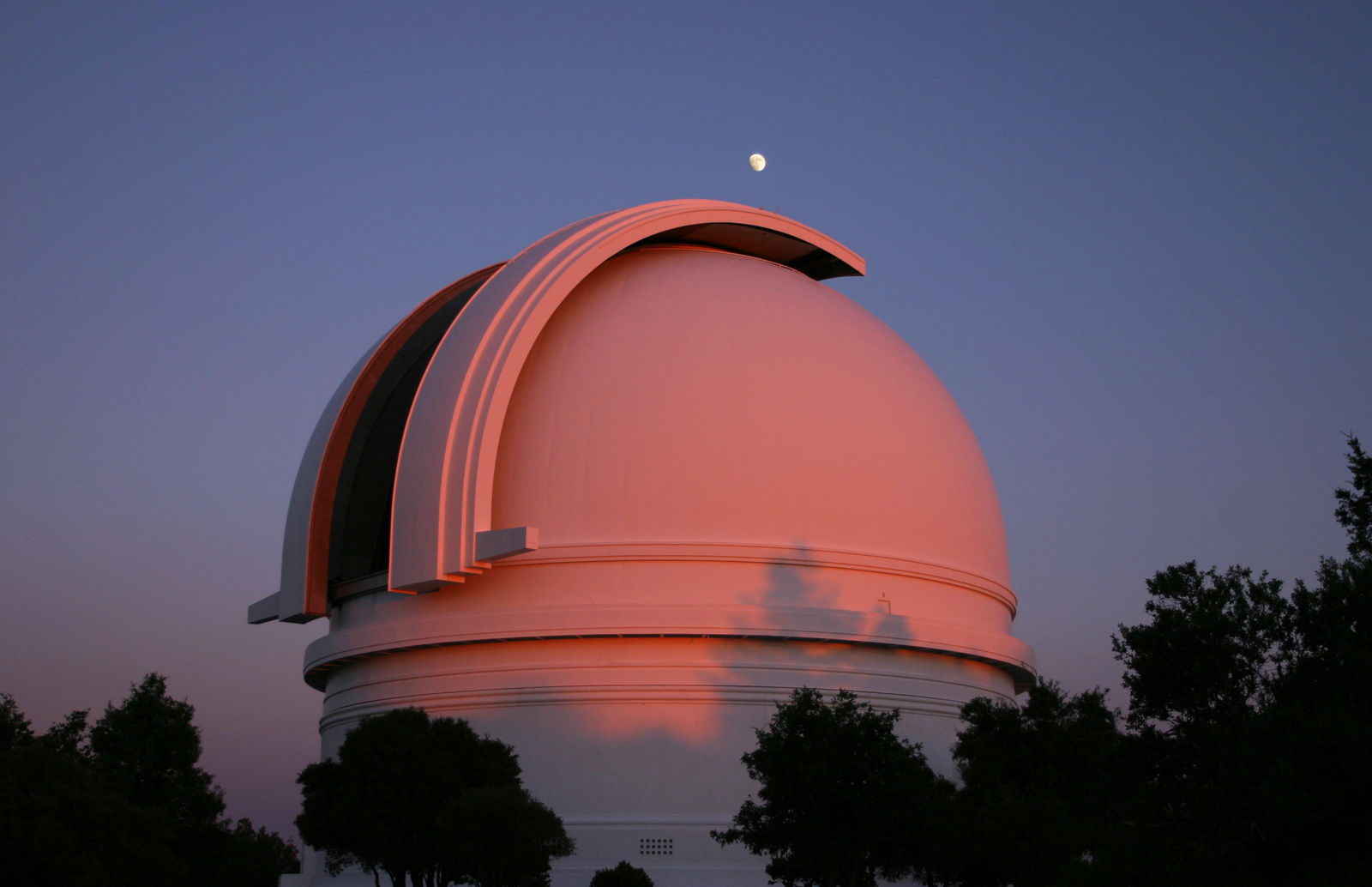
Fig. 7a. Dome of the 200-inch (5m) Hale Telescope (Caltech Images Collection)

Fig. 7b. 200-inch (5m) Hale Telescope from the south (Palomar/Caltech)

Fig. 7c. 200-inch (5m) Hale Telescope (1948) (Caltech Images Collection)
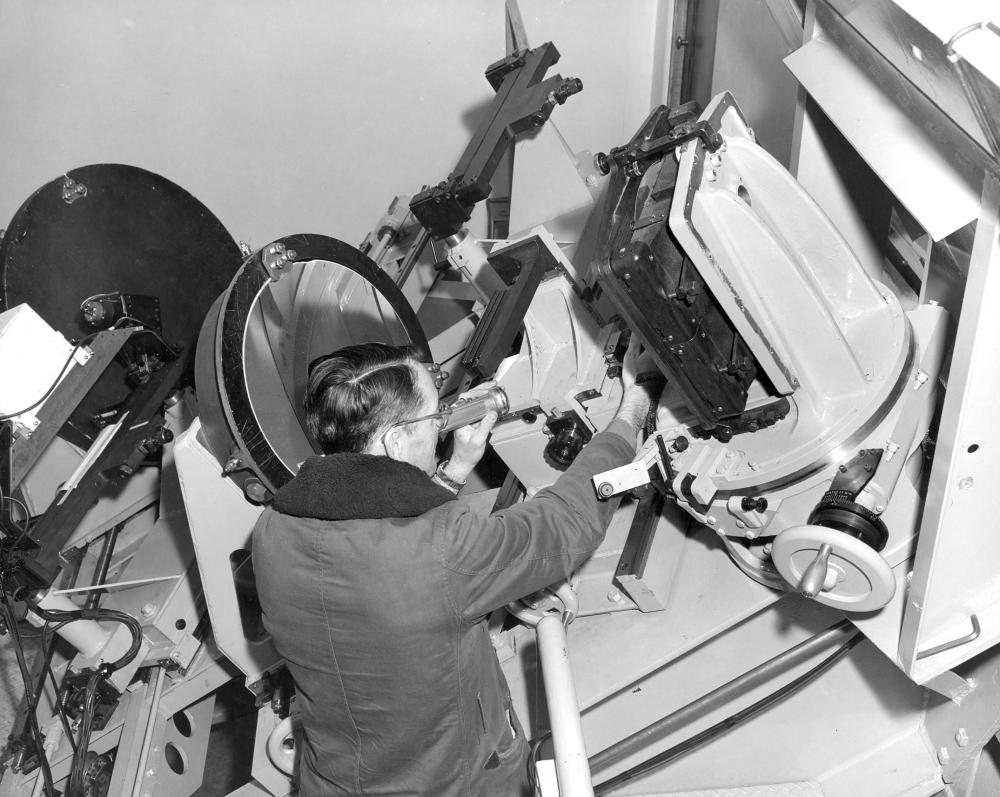
Fig. 7d. Horace Welcome Babcock (1912--2003) working with the 200-inch-Coudé Spectrograph (Caltech Images Collection)
200-inch (5m) Hale Telescope (1948)
The 200-inch Hale Telescope is a highlight in telescope making.
The Pyrex mirror -- 'non-expansion' glass -- was made by Corning Glass Works, New York (1934). Later modern developments were the Borosilicate glass like BK7, Nonex, or Supremax or Borofloat, developed already by Schott of Jena since 1887/93) or Schott's innovative glass ceramics ZERODUR 1968 (Baumann 2002).
The mounting of the 200-inch was not easy; the development lasted from 1929 to 1936. Hale wanted to avoid the geometric limitations of the 100-inch Hooker Telescope that could not point at the Celestial Pole. A fork mount, a horseshoe-yoke (attributed to John Anderson, Edgar, and Mark Serrurier), a spherical mount with horseshoe-yoke (Porter), split-ring yoke mounting, and "Victoria" mounting were suggested and widely discussed by Pease, Porter, and external advocates Robert Edgar and H. Page Bailey. Finally the innovative split-ring yoke mounting was constructed. The refinements of the telescope structure were led by Serrurier (yoke structure simplification and "Serrurier Truss" telescope tube) and Rein Kroon (declination trunnions and oil flotation), (more information: 3. Telescope and Instrument Design).
With the help of this "Big Schmidt" a photographic atlas of the northern starry sky, called the "Palomar Observatory Sky Survey" (1959), was compiled.
Important Early Researchers in Astrophysics at Palomar Observatory
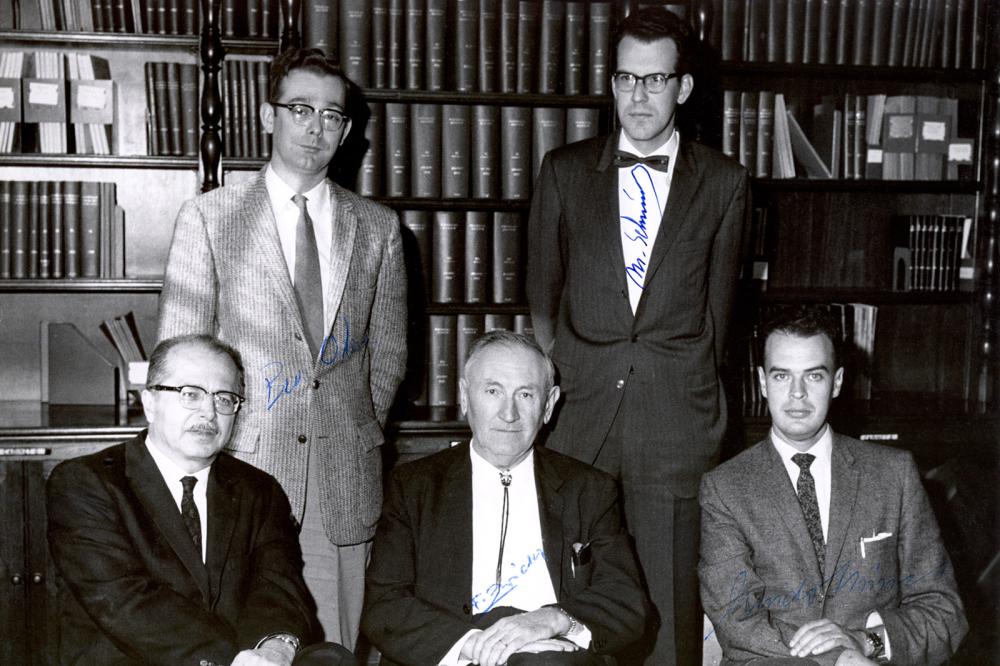
Fig. 8a. Astrophysicists -- Front row: Jesse Greenstein (1909--2002), Fritz Zwicky (1898--1974), Guido Münch Paniagua (1921--2020), Back row: John Beverley Oke (1928--2004), Maarten Schmidt (1929--2022), (Caltech Archives)
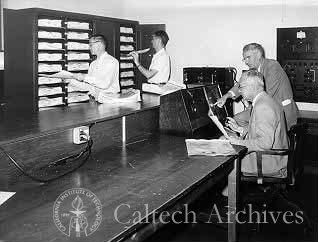
Fig. 8b. Rudolph Minkowski (1895--1976) (right front) and Ira Sprague Bowen (1898--1973) (right rear) inspect a pair of duplicate positive prints of the Sky Survey Atlas, 1955 (Caltech Images Collection)
....
As infrastructure for the astronomers the Monastery, the observer's dormitory was added - in addition, a power house and machine shop.
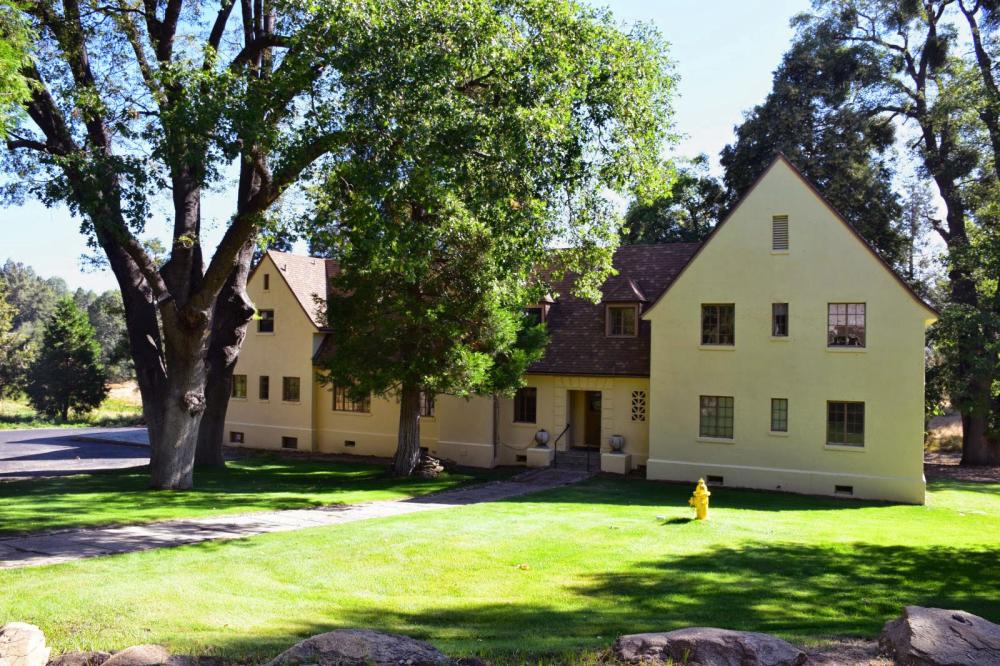
Fig. 8c. Monastery - Observer's dormitory (Caltech Images Collection)
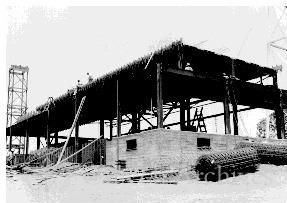
Fig. 8d. Power House and machine shop, looking east (1936), (Caltech Images Collection)
History
Telescopes and Instruments of Palomar Observatory

Fig. 9a. Shutters of the Dome of the 18-inch (46cm) Schmidt Camera (1936), (Caltech Images Collection)

Fig. 9b. Observing at the 18-inch (46cm) Schmidt Camera (1950) (Caltech Images Collection)

Fig. 9c. Dome of the 18-inch (46cm) Schmidt Camera (1936), (Caltech Images Collection)

Fig. 9d. 18-inch (46cm) Schmidt Camera (1936) (Caltech Images Collection)

Fig. 9e. Long telescope used to photograph the solar eclipse (March 1934), (Caltech Images Collection)
- Refractor for photographing the solar eclipse (1934)
- 18-inch (46cm) Schmidt Camera (first light on September 5, 1936), mirror 24-inch (61cm), f/2, 36-inch-focal length (92cm),
the film covered an area of the sky 8.75° x 8.75°, roughly the size of 17 full moons.
It was funded by a Rockefeller grant, designed by Russell W. Porter and engineered at Caltech (John A. Anderson, John Strong, Sinclair Smith, Albert Brower, Russell Porter) (cf. Zwicky 1964), based on Bernhard Schmidt's invention in Hamburg Observatory (1930).
Optics: Caltech optical shop, tube and mounting: Caltech instrument shop.
Palomar Planet-Crossing Asteroid Survey (PCAS, 1973-1995) and the Palomar Asteroid and Comet Survey (PACS, 1982-1994).
The 18-inch Schmidt is decommissioned, but on display in Greenway Visitor Center.

Fig. 10a. 120-inch (3m) mirror (1935) (Caltech Images Collection)

Fig. 10b. 8-inch (20cm) Schmidt Camera (1940) (Caltech Images Collection)
- 120-inch (3m) mirror (1935), a test blank, which ended up being the primary for the Shane Telescope at Lick Observatory (Shane Telescope at Lick Observatory)
- 8-inch (20cm) Schmidt Camera (1940), a small portable Schmidt telescope designed by Porter and built in 1940; it was probably built at the Caltech instrument/machine shop, also the optics at the Caltech optical shop.
"Its short focus (f/1) enabled it to capture 1600 times the area of the full Moon onto round photographic film. It was estimated that the 8-inch could photograph the entire visible sky in three or four nights of good seeing. The 8-inch Schmidt used to be housed in the "Doghouse" at Palomar, but being portable, it was occasionally used from other locations. Zwicky took it to White Sands to look at V-2 (!!) rocket experiments after the war. There was some minor science done with it otherwise."

Fig. 11a. 48-inch (1.2m) Schmidt Telescope (Caltech Images Collection)

Fig. 11b. Observing at the 48-inch (1.2m) Schmidt Telescope, 1967 (Caltech Images Collection)
- 48-inch (1.2m) Schmidt Telescope (1938--1948), (72-inch (1.8m mirror, focal ratio f/2.5),
two 10-inch-aperture (0.25m) guiding refracting telescopes (no longer in use),
used with 10-inch (25cm) x 14-inch (36cm) glass photographic plates,
renamed: Samuel Oschin Telescope (1986),
with a new corrector plate using glass with less chromatic aberration.
- National Geographic Society -- Palomar Observatory Sky Survey (NGS-POSS-I): 2,000 photographic plates (1949-1958),
Digitized Sky Survey (DSS) (1986-1994), 102 CD-ROMs - Second Palomar Observatory Sky Survey (POSS-II) (1980s-1990s), Digitized Sky Survey (DSS) -- NASA/Space Telescope Science Institute (STScI)
- CCD imager introduced in 2000 -- Near-Earth Asteroid Tracking (NEAT)
- CCD mosaic camera for the Quasar Equatorial Survey Team (QUEST), (2003-2007)
- CCD array (606 megapixels) with a 47 square degree field of view -- Zwicky Transient Facility (ZTF), (2009-2017),
observed with the Samuel Oschin Schmidt which operates robotically (together with the 60-inch-Telescope)
- National Geographic Society -- Palomar Observatory Sky Survey (NGS-POSS-I): 2,000 photographic plates (1949-1958),

Fig. 12a. Dome of the 200-inch (5.1m) Hale Telescope (Caltech Images Collection)
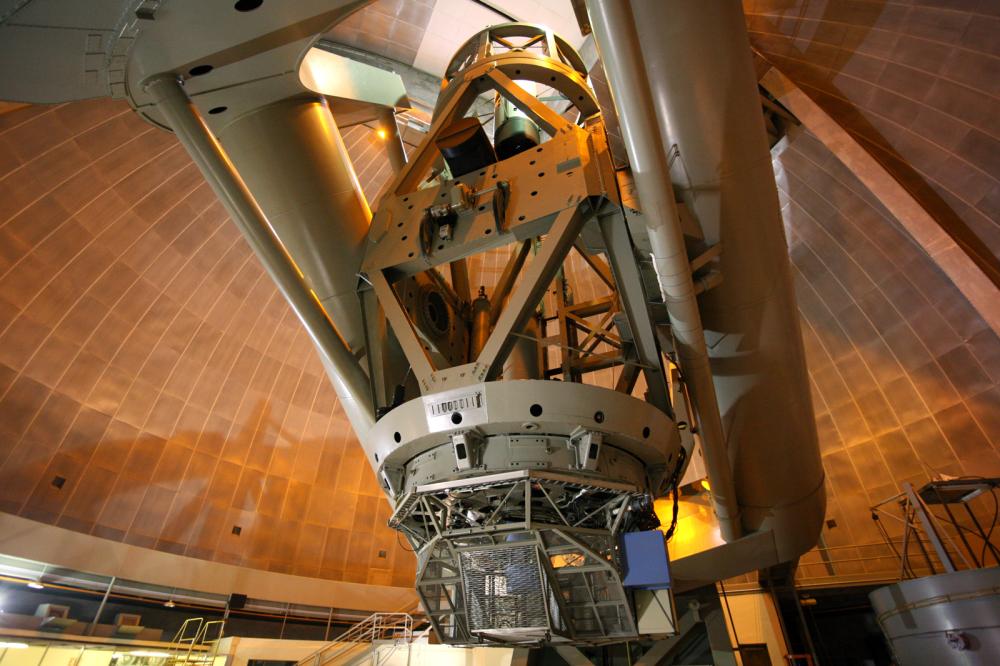
Fig. 12b. Truss of the Hale Telescope, bottom: 200-inch (5.1m) mirror and Cassegrain focus cage, top: Prime focus cage (Caltech Images Collection)

Fig. 12c. Meridian cross sectional drawing by Russell W. Porter of the 200-inch (5.1m) Hale Telescope (Caltech Images Collection)

Fig. 12d. Foci and light path of the Hale Telescope (Caltech Archives)

Fig. 12e. Coudé Spectrograph of the the 200-inch (1949), (Caltech Images Collection)
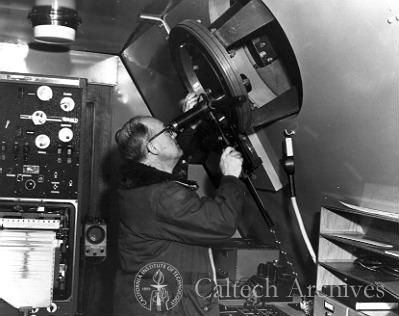
Fig. 12f. William C. Miller (1910--1981) working with the 200-inch-Coudé Spectrograph (Caltech Archives)
- Hale Telescope -- 200-inch (5.1m) Reflecting Telescope (1928--1948)
with a "Pyrex" mirror, Corning Glass Works, New York (1934), disk weighing 14.5 tons (the paraboloid mirror's thickness 49.8cm to 59.7cm),
the polished surface is covered with a thin layer of aluminum.
The 41.8-m-dome was designed by Russell W. Porter (1871--1949) and engineered at Caltech, also the 18-m-long tube,
and the innovative split-ring yoke mounting of the Hale telescope was constructed there.
Most Hale Telescope mount parts were in fact constructed at Westinghouse.
The total weight of the telescope and mounting is 530 tons.
The mirror support cell was built at Babcock and Wilcox.
Foci:
1. Primary focus (near the top), where an observer can sit in a cage or scientific instruments can be placed -- f/3.3, 660-inch-focal length (16.76m)
2. With a secondary mirror the light is reflected down through a hole in the primary mirror -- Cassegrain focus (f/16, 3200-inch-focal length (81.3m)
3. Coudé focus: f/30, 6000-inch-focal length (152m)
Additional Instruments:
- Coudé Spectrograph (1949)
- PALM-3000: Adaptive optics for better seeing, correcting for distortions caused by Earth's atmosphere; PALM-3000 with image-sharpening devices:
Palomar High Angular Resolution Observer (PHARO) and Palomar Radial Velocity Instrument (PARVI) - Two wide-field cameras: Wafer-scale imager for Palomar (WaSP) in the optical and the Wide-field Infrared Camera (WIRC) in the infrared
- High-speed CHIMERA imager at the prime focus
- Cosmic Web Imager (CWI) at Cassegrain focus (integral-field unit)
- Single-object spectrographs: optical Double Spectrograph (DBSP) and infrared Triple Spectrograph (TripleSpec) at the Cassegrain focus
- Current instrument list
Fig. 12g. 200-inch-prime focus elevator to cage (2009), in the background the primary mirror (Palomar Archives)
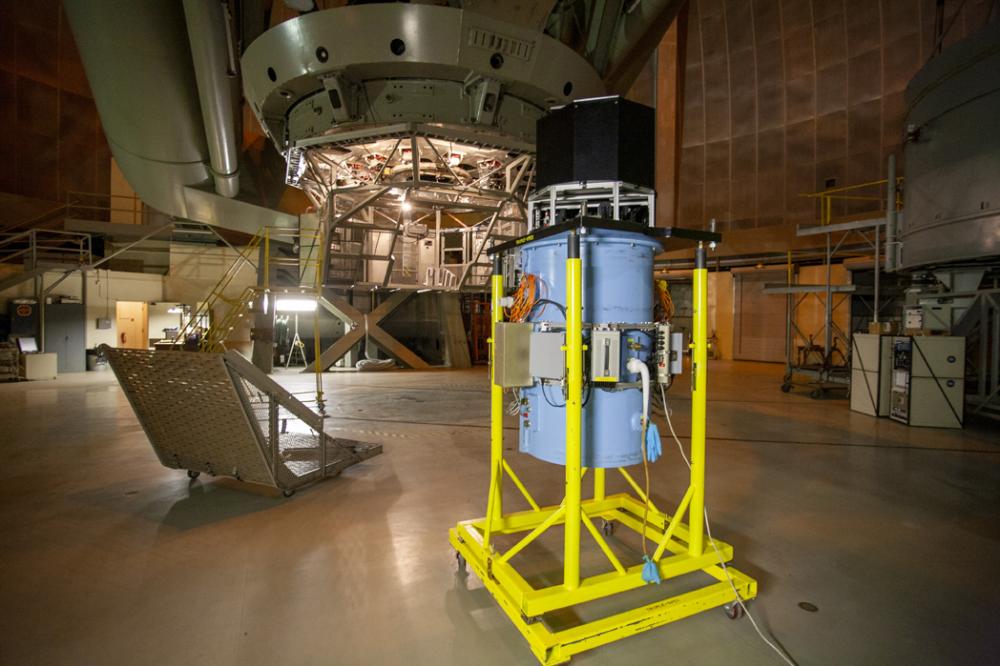
Fig. 12h. 200-inch-triple spectrograph (2007), in the background the Cassegrain cage (Palomar Archives)

Fig. 12i. 200-inch-BE-12-3-WIRC1a (Palomar Archives)
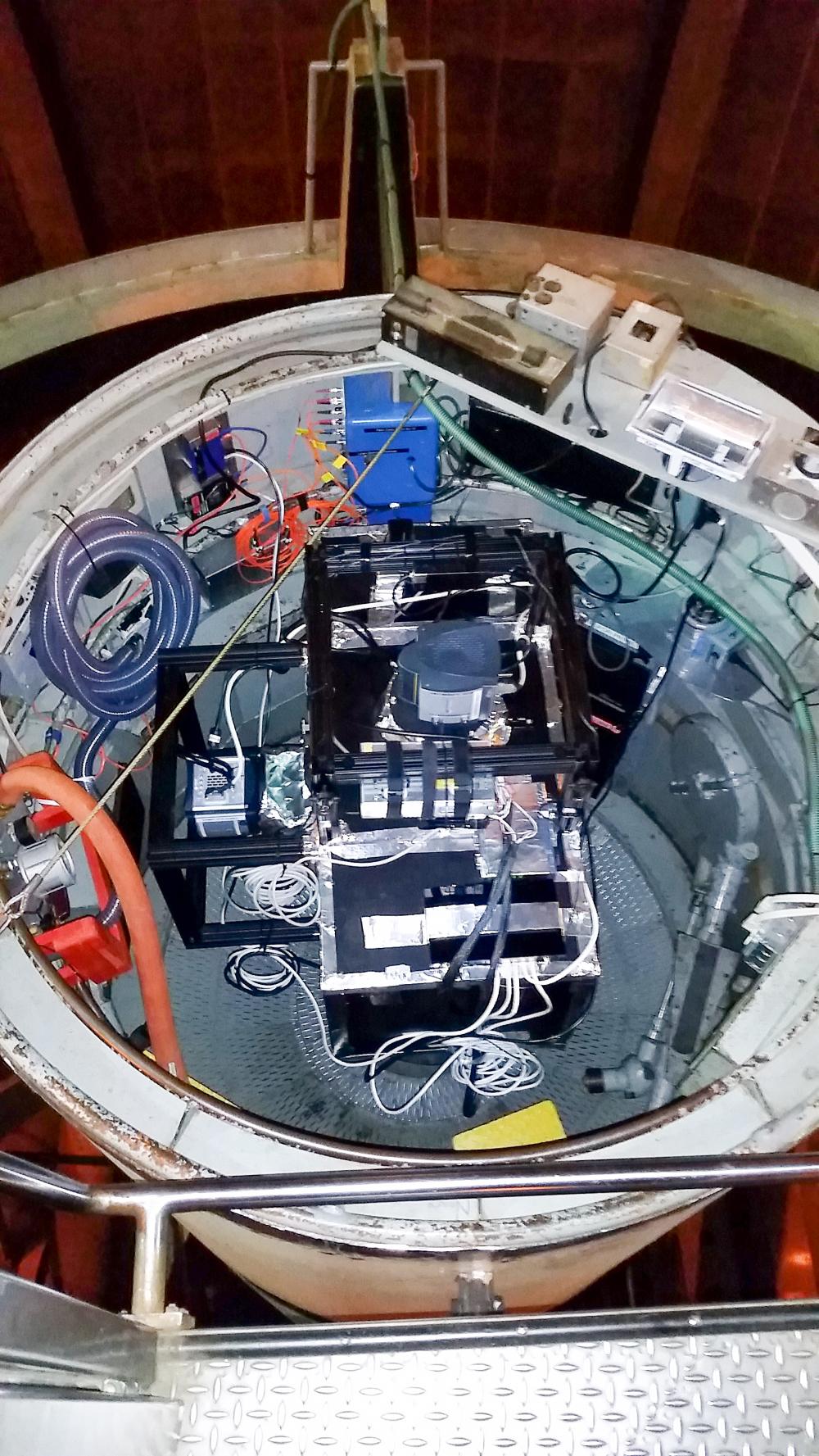
Fig. 12k. 200-inch-CHIMERA-2, mount prime focus (Palomar Archives)

Fig. 13a. 20-inch-Schmidt Telescope (1951) (Caltech Images Collection)
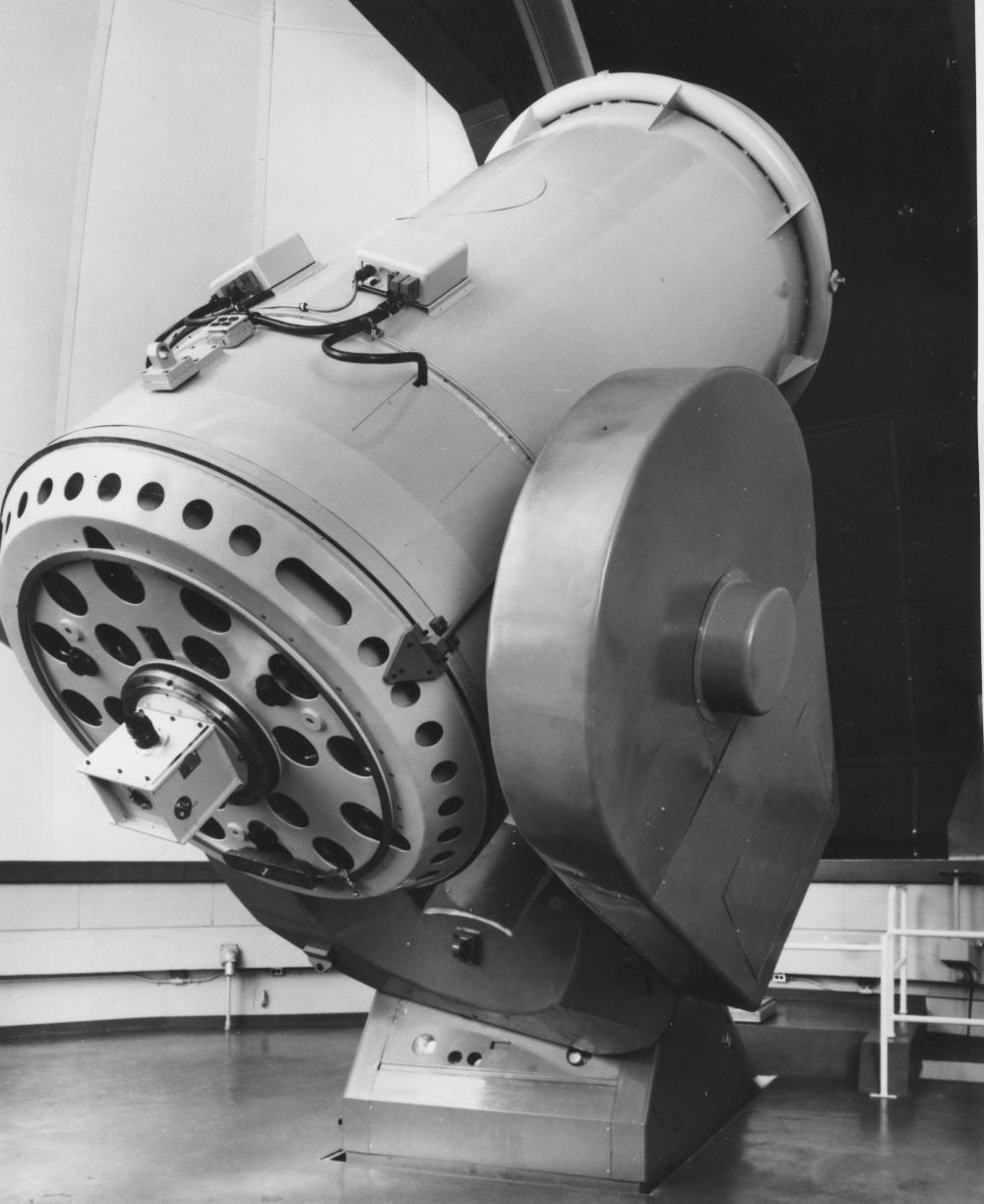
Fig. 13b. 60-inch (1.5m) Telescope (1969) (Caltech Images Collection)
- 20-inch-Schmidt Telescope (1951); it was originally constructed for Mt. Wilson -- presumably by Carnegie.
It seems to have first come to Palomar in the early 1950s. The latest known records of Palomar use seem to date from the mid 1960s.
(cf. Hillenbrand, Lynne A.: Young Stellar Object Science with Any and Every Telescope Palomar has on Offer. PSM 2023.)
- 60-inch (1.5m) Telescope (1969), Cassegrain focal ratio of P60 as f/8.75, and a Coudé focal ratio of f/30,
housed in the Oscar G. Mayer Memorial Building, operates now robotically,
taking rapid, low-dispersion optical spectra for the ZTF project with an integral field spectrograph (Spectral Energy Distribution Machine, SEDM)
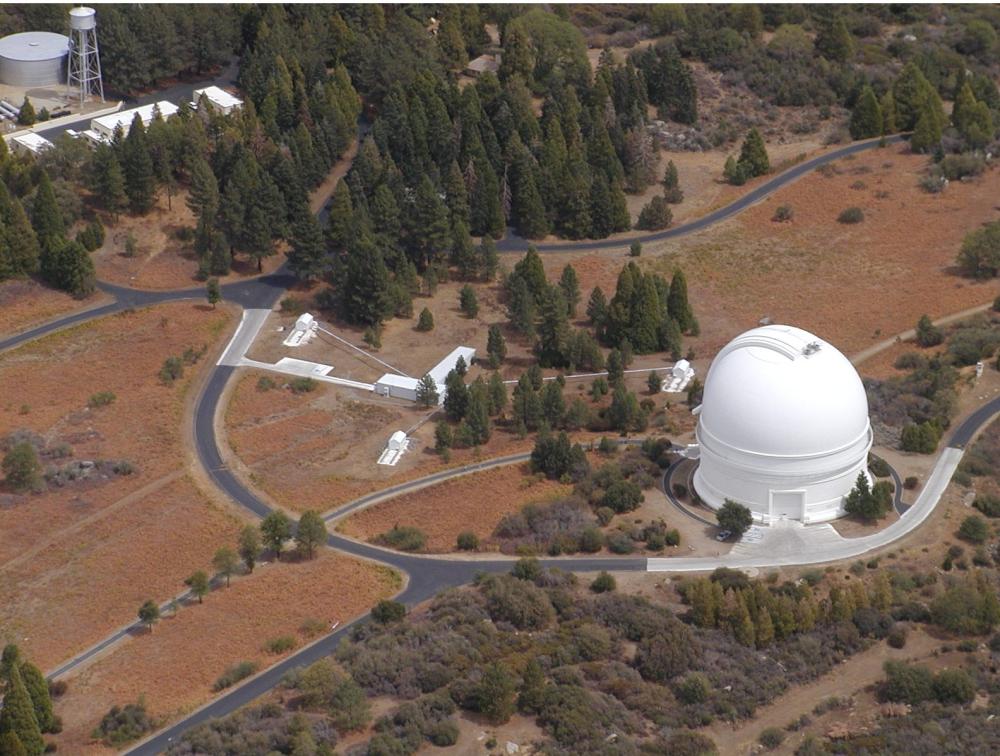
Fig. 14. Palomar Testbed Interferometer (PTI), (Caltech Images Collection)
- Palomar Testbed Interferometer (PTI), Jet Propulsion Laboratory (JPL) with funding from NASA,
a near-infrared, long-baseline stellar interferometer of three 40cm-telescopes providing a combined baseline up to 360 feet (110m).
The NASA Keck Interferometer was inspired by the PTI, now decommissioned (cf. Decommissioned telescopes, Palomar Testbed Interferometer (PTI)). - The Palomar Planet Search Telescope (PPST), or Sleuth, was a 3.9-inch (10cm) robotic telescope (2003--2008),
searching for planets around other stars using the transit method.
(Cf. Sleuth: The Palomar Planet Finder, Trans-Atlantic Exoplanet Survey (TrES)). - 12-inch (30cm) Gattini-IR Telescope (2018)
(Cf. 12-inch-Gattini-IR). - 40-inch (1.0m) WINTER (The Wide-field Infrared Transient Explorer) 1x1 degree reflecting robotic telescope (2021).
(Cf. WINTER 1 meter telescope, PW1000 Observatory System, PLANEWAVE Instruments).

Fig. 15. 32-foot-diameter-Radio Telescope (Caltech Images Collection)
- 32-foot-diameter-Radio Telescope;
it eventually went to Owens Valley and that's where Owens Valley Radio Observator (OVRO) was established (cf. OVRO, Cohen, Marshall H.: The Owens Valley Radio Observatory: Early Years. In: Engineering & Science/Spring (1994), p. 8-23).
Directors of Palomar Observatory
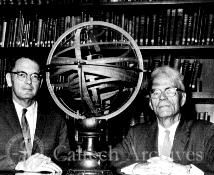
Fig. 16a. Horace Welcome Babcock (1912--2003) and Ira Sprague Bowen (1898--1973), Photo by James McClanahan, 1963 (Calisphere, Caltech Images Collection)

Fig. 16b. Maarten Schmidt (1929--2022), 1978 (CC)
- 1948 to 1964 -- Ira Sprague Bowen (1898--1973)
- 1964 to 1978 -- Horace Welcome Babcock (1912--2003)
- 1978 to 1980 -- Maarten Schmidt (1929--2022)
- 1980 to 1994 -- Gerry Neugebauer (1932--2014)
- 1994 to 1997 -- James Westphal (1930--2004)
- 1997 to 2000 -- Wallace Leslie William Sargent (1935--2012)
- 2000 to 2006 -- Richard Ellis (*1950)
- 2006 to 2018 -- Shrinivas Kulkarni (*1956)
- 2018 to 2023 -- Jonas Zmuidzinas (*1961)
- 2023 to .... -- Christopher Martin
State of preservation
The Palomar Observatory is well preserved concerning buildings and instruments. But this cultural heritage is not yet monument protected; it is not in the List of National Historic Landmarks in California. Perhaps efforts should be made in this direction.
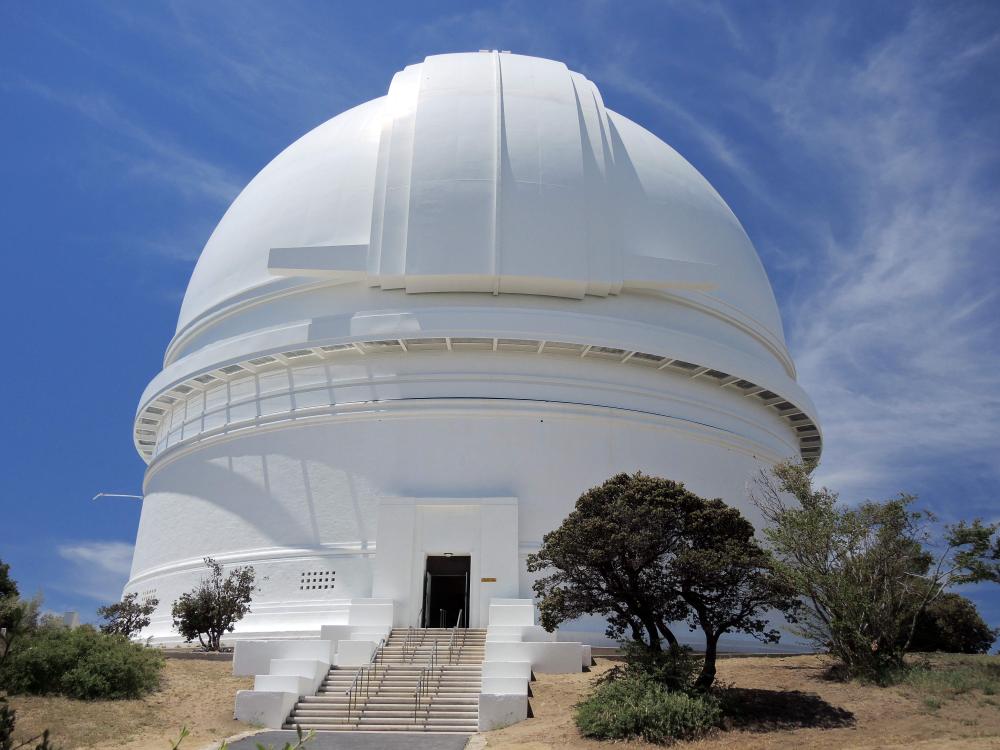
Fig. 17a. Dome of the 200-inch of Palomar Observatory, May 2014 (CC4, Digadigado)

Fig. 17b. 200-inch-Hale Telescope from the west (Caltech Images Collection)

Fig. 17c. 48inch-Samuel-Oschin Plaque (Palomar Archives)

Fig. 17d. 60inch-building Plaque (Palomar Archives)

Fig. 17e. 200-inch-Rockefeller Plaque (Palomar Archives)

Fig. 17f. 200-inch-Westinghouse Plaque (Palomar Archives)
Comparison with related/similar sites
The 200-inch (5.1-m) Hale Telescope (inaugurated in 1948) was the largest "effective" telescope in the world until 1993 (Keck 1).
The 6-m (236-inch) Bolshoi Teleskop Alt-azimutalnyi (BTA-6) in the Special Astrophysical Observatory (SAO) of the Russian Academy of Science in Zelenchukskaya, Caucasus (1975 third mirror 1978), had an innovative altazimuth mount with a computer-controlled, but had problems with the poorly fabricated mirror glass, made by the Lytkarino Optical Glass Plant, near Moscow, which did not show the expected performance. An update, using of the ultra-low expansion glass-ceramic Sitall, was never realized in order to reduce the thickness from 65 to 40cm, thus reducing thermal effects.
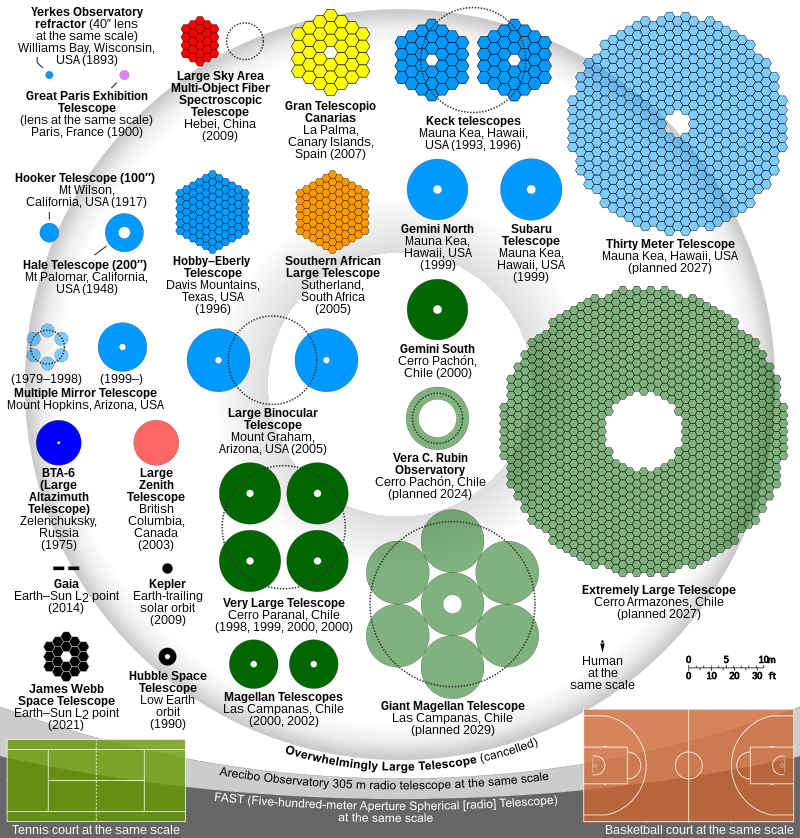
Fig. 18. Comparison of primary mirrors of optical telescopes (CC3, Cmglee)
Largest Reflectors of the 20th century
Reflectors since 1900 before the 200-inch
Hamburg-Bergedorf has the remarkable 1-m (39.4-inch) Zeiss-Reflector (1911, 3m focal length, Newton
with extremely high focal ratio 1:3, now Cassegrain and Nasmyth focus), the largest in Europe,
and the third largest in the world at that time (1.52-m Mount Wilson, 1.07-m Lowell-Observatory Flagstaff) --
the prototype for Europe:
Zeiss 1-m-Reflector, Uccle, Brussels, Belgium (1913),
Merate Astronomical Observatory near Como (Milan-Brera, Italy) (1926),
Zeiss 1.22-m (48-inch) Newtonian-Cassegrain-Reflector (Berlin University Observatory) in Potsdam-Babelsberg, Germany (1924, since 1947 Simeiz, Crimea).
Important Reflectors before the 200-inch -- the 2-m class
1.0-m (40-inch) Ritchey-Chrétien, Washington, D.C. (1934) -- moved to USNO Flagstaff, Arizona (1955),
1.55-m (61-inch) Oak Ridge Observatory, Mass. (1933),
1.75-m (69-inch) Perkins Observatory, Ohio (1931-1964),
1.83-m (72-inch) Plaskett telescope, Dominion Astrophysical Observatory (DAO), Victoria, British Columbia, Canada (1918),
1.88-m (74-inch) David Dunlap Observatory (DDO), Ontario (Toronto), Canada (1935),
2.08-m (81.9-inch) Otto-Struve-Telescope (McDonald Observatory, Texas (1939),
2.5-m (100-inch) Hooker Telescope, Mt. Wilson (1917),
5-m (200-inch) Hale-Teleskop, Mt. Palomar (1948).
Many 2-m-reflectors were built in the 1960s and 1970s, like the
2.0-m (78.7-inch) Alfred Jensch Teleskop, Karl Schwarzschild Observatory, Jena, Germany (1960).
Important examples of 20th century reflectors
after the Palomar 200-inch, the 3.5-m class
4.7-m (185-inch) Multiple Mirror Telescope (MMT, 6x1.8m), F.L. Whipple Obs., Arizona (1979), decommissioned
4.2-m (165-inch) William Herschel Telescope, Canary Islands, Spain (1987),
4-m (157-inch) Mayall Telescope, Kitt Peak, Arizona (1973),
4-m (157-inch) Víctor M. Blanco Telescope, Cerro Tololo Inter-American Observatory (CTIO) (1976),
3.9-m (153-inch) Anglo-Australian Telescope (AAT), Siding Spring Observatory, Australia (1974),
3.8-m (150-inch) United Kingdom Infrared Telescope (UKIRT), Hawaii (1979),
3.6-m (141-inch) Canada-France-Hawaii Telescope (CFHT), Hawaii (1979),
3.6-m (141-inch) Telescopio Nazionale Galileo (TNG) (Italy), Canary Islands, Spain (1997),
3.6-m (141-inch) New Technology Telescope (NTT), ESO La Silla, Chile (1989),
3.6-m (141-inch) ESO La Silla, Chile (1976),
3.5-m (138-inch) MPI CAHA, Calar Alto, Spain (1984),
3.05-m (120-inch) C. Donald Shane Telescope, Lick Observatory (1959).
The innovative reflectors (segmented mirrors, active and adaptive optics), end of the 20th century, since the 1990s -- the 10-m class
6.5-m (256-inch) Multiple Mirror Telescope (new MMT), F.L. Whipple Obs., Arizona, USA (2000),
6.5-m (256-inch) Magellan 1+2, Las Campanas Obs., USA, Atacama Chile (2000+2002)
8.1-m (319-inch) Gemini North + South, USA, on Mauna Kea Hawaii and on Cerro Pachón Chile - Cerro Tololo Inter-American Observatory (CTIO) (1999 and 2001),
8.2-m (323-inch) Subaru (JNLT) Japan in Hawaii (1999)
8.2-m (323-inch) VLT 1-4, ESO, Paranal, Chile (1998--2001),
9.2-m (362-inch) Southern African Large Telescope (SALT) (2005),
10-m (394-inch) Hobby-Eberly Telescope (HET), McDonald Observatory, Texas, USA (1997),
10-m (394-inch) 36 hexagonal segments, Keck 1+2, USA, on Mauna Kea, Hawaii (1993+1996),
10.4-m (409-inch) 36 hexagonal segments, Gran Telescopio Canarias (GTC), Spain (2006),
11.9-m (469-inch) two 8.4-m (331-inch) mirrors, Large Binocular Telescope (LBT), Mount Graham, Arizona, USA (2004).
Also after 2000, more reflectors were built, e.g.:
4-m (157-inch) Daniel K. Inouye Solar Telescope, Hawaii (2019),
3.6-m (142-inch) Devasthal Optical Telescope (DOT), Nainital, India (2016).
New Planned "Giant" Reflectors (2020s)
In the 2020s, three new "giant" reflectors are currently being constructed:
- Giant Magellan Telescope (GMT) with seven 8.4m individual mirrors, and an equivalent diameter of 21.4m (area) or 24.5m (resolution), Las Campanas Observatory in Chile (2009 to 2029)?
- Thirty Meter Telescope (TMT) with 492 hexagonal mirrors of 1.4m, Mauna Kea Observatory Hawaii, planned for 2027.
- Extremely Large Telescope (ELT) with a 39m diameter primary mirror, composed of 798 hexagonal mirror elements (the original plan was for a mirror with 42m and 906 segment), Cerro Armazones mountain in the Chilean Atacama Desert, 2010 to 2027.

Fig. 19. Overview: Map of Larger Schmidt Telescopes in the World (Graphics: Annie C. Mejía Roa, Palomar Archives)
Schmidt Telescopes (since 1930)
After the invention of the Schmidt Telescope by Bernhard Schmidt in Hamburg Observatory in 1930, already the 18-inch (46cm) Schmidt Camera in Palomar Observatory showed the possibilities of this innovative type of instrument for astrophysical research.
Threats or potential threats
Palomar mountain was chosen in 1934 due to the large percentage of clear nights, good seeing, and at that time far from city illumination. But concerning light pollution from artificial lighting today, Palomar Observatory is located 70 km (45 miles) from San Diego and about 160 km (100 miles) from Los Angeles.
Efforts were made to meet these threats, cf. Brucato, Robert John: Site Preservation at Palomar Observatory or Light Pollution and Palomar Observatory.

Fig. 20. Artificial light in the Palomar sky looking SW toward Escondido (Palomar/Caltech)

Fig. 20. This partial panorama looks southwest (left), through north (center, towards the Hale Telescope dome), to northeast (right). It reveals the sky glow caused by lights in San Diego County (left), Riverside County (center), and Palm Springs (right). Photographed February 4, 2005 (Palomar/Caltech)
Present use
The Palomar Observatory is still doing cutting edge research.
But it has also an on-site museum -- the Greenway Visitor Center, and offers guided tours for the public, and public events (cf. The Addison White Greenway, Jr. Visitor Center).
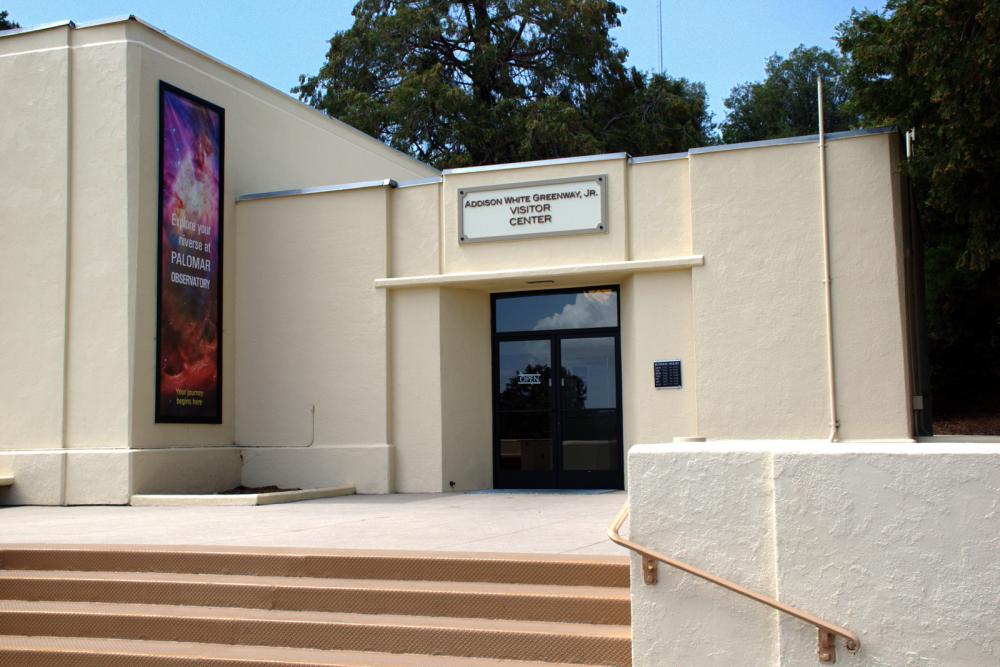
Fig. 20a. Visitor Center of Palomar Observatory (Caltech Images Collection)
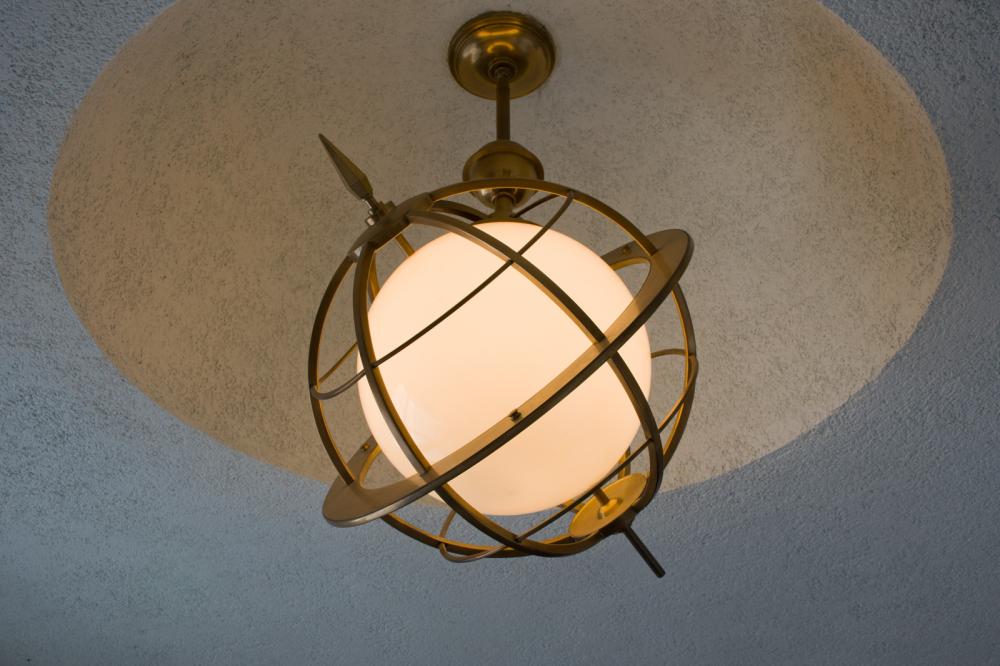
Fig. 20b. Globe Lamp in the Visitor Center (Caltech Images Collection)
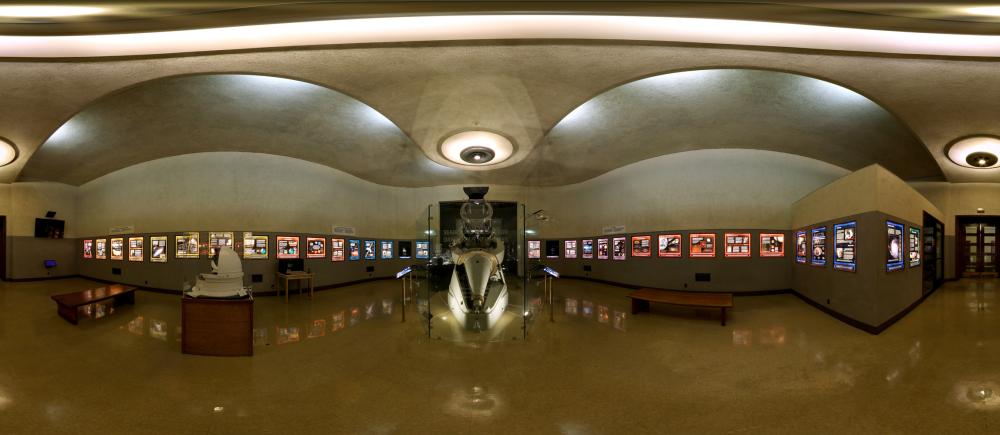
Fig. 20c. Museum Panorama (Caltech Images Collection)
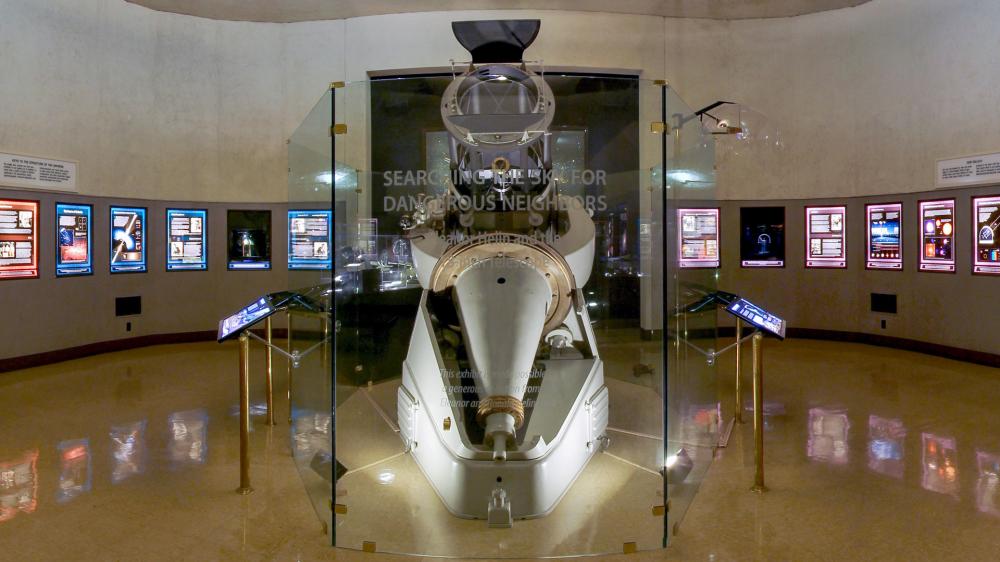
Fig. 20d. Museum Panorama with 18-inch Schmidt Telescope, Helin Eleanor Exhibit (Helin Family Estate, Caltech Images Collection)
Astronomical relevance today
The research in Palomar Observatory covers the topics near-Earth asteroids, outer Solar System planets, Kuiper Belt objects, star formation, exoplanets, Black Holes and X-ray binaries, Supernovae and other transient sources, and Quasars / Active Galactic Nuclei.
(Cf. Current Research and Observations Slideshow, Hale Telescope Science and Instruments, Mapping the Palomar Sky).
References
Bibliography (books and published articles)
- Adams, Walter S.: George Ellery Hale. In: The Astrophysical Journal 87 (May 1938), p. 369-388.
- Aller, L.H.: Ira S. Bowen, 1898 December 21 -- 1973 February 6. In: Quarterly Journal of the Royal Astronomical Society 15 (1974), 193--196.
- Anderson, J.A.: The Astrophysical Observatory of the California Institute of Technology. In: Journal of the Royal Astronomical Society of Canada (JRASC) 36 (1942), p. 177-200.
- Baade, Walter & Fritz Zwicky: On Super-novae. In: Proceedings of the National Academy of Sciences of the United States of America, Volume 20 (1934), Issue 5, p. 254-259.
- Baade, Walter & Fritz Zwicky: Photographic Light-Curves of the Two Supernovae in IC 4182 and NGC 1003. In: Astrophysical Journal 88 (1938), p. 411-421, 2 plates.
- Babcock, Harold D.: George Ellery Hale. In: Publications of the Astronomical Society of the Pacific 295 (June 1938), p. 156-165.
- Babcock, Horace W.: Ira Sprague Bowen 1898--1973. In: Biographical Memoirs of the National Academy of Sciences, Vol. 53 (1982), 82--119.
- Baumann, Karsten: Entwicklung und Fertigung der Glaskeramik Zerodur bei der Firma Schott Glas von 1966 bis 1996 und deren Anwendung als Spiegelträgermaterial im Großteleskopbau. PhD thesis, University of Hamburg 2002.
- Boden, Andy F., deputy director: personal communication (2024).
- Brucato, Robert John: Site Preservation at Palomar Observatory. In: Light Pollution, Radio Interference, and Space Debris. IAU Colloquium 112. Ed. by D.L. Crawford. ASP Conference Series 17 (1991), p. 20-24.
- Caltech Archives: Giants of Palomar Collection of Russell W. Porter Drawings of the 200-Inch Palomar Telescope. 1934 Porter Cutaways.
- Crawford, David Livingston: The Construction of large telescopes. London, New York: Academic Press 1966.
- Florence, R.: The Perfect Machine. New York City: Harper Perennial 1994.
- Hale, George Ellery: The Astrophysical Observatory of the California Institute of Technology. In: Astrophysical Journal 82 (September 1935), 2, 111--139.
- Johnson Jr., John: Zwicky: The outcast genius who unmasked the universe. Cambridge, Mass.: Harvard University Press 2019.
- Kragh, Helge S.: Conceptions of Cosmos: From Myths to the Accelerating Universe. A History of Cosmology. Oxford: Oxford University Press 2007.
- Mejía Roa, Annie C., Caltech Archives: personal communication (2024).
- Mollise, Rod: The Urban Astronomer's Guide: a Walking Tour of the Cosmos for City Sky Watchers. Berlin: Springer 2006.
- Müller, Roland: Fritz Zwicky. Leben und Werk des grossen Schweizer Astrophysikers, Raketenforschers und Morphologen. Glarus: Baeschlin 1986.
- Porter, Russell W.: A New Form of Mounting Large Reflectors, Popular Astronomy 26 (1918), p. 147--148.
- Preston, George W.: Obituary: Horace Welcome Babcock (1912--2003). In: Publications of the Astronomical Society of the Pacific 116 (2004), Issue 817, p. 290--294.
- Reid, I.N.; Brewer, C.; Brucato, R.J.; McKinley, W.R.; Maury, A.; Mendenhall, D.; Mould, J.R.; Mueller, J.; Neugebauer, G.; Phinney, J.; Sargent, W.L.W.; Schombert, J. & R. Tricksten: The Second Palomar Sky Survey. In: Publications of the Astronomical Society of the Pacific 103 (July 1991), p. 661-674. (DOI: 10.1086/132866)
- Shara, Michael M.; Sandage, Allan & David R. Zurek: The Early Palomar Program (1950-1955) for the Discovery of Classical Novae in M81: Analysis of the Spatial Distribution, Magnitude Distribution, and Distance Suggestion. In: Publications of the Astronomical Society of the Pacific 111 (November 1999), No. 765, p. 1367-1381. (8-inch)
- Stöckli, Alfred & Roland Müller: Fritz Zwicky, Astrophysiker. Genie mit Ecken und Kanten. Eine Biographie. Zürich: NZZ Libro 2008.
- Watterson, T.V.: Palomar Observatory. San Diego, California: Frye & Smith 1941.
- Wolfschmidt, Gudrun: Wilhelm Heinrich Walter Baade (1893--1960), Astronom. In: Neue Deutsche Biographie (NDB) Online. Ed. by the Historischen Kommission bei der Bayerischen Akademie der Wissenschaften. München 2022. (https://www.deutsche-biographie.de/dbo006005.html#dbocontent).
- Zirin, Harold: George Ellery Hale. In: Solar Physics 5 (1968), Issue 4, p. 435-441.
- Zwicky, Fritz: Basic results of the international search for Supernovae. In: Annales d'Astrophysique 27 (1964), p. 300-312.
-
Zwicky, Fritz: Chapter 4: The Top 100 Extragalactic Supernovae. In: Supernovae and Supernova Remnants. Ed. by Cristiano Batalli Cosmovici. Dordrecht, Holland: D. Reidel Publishing Company (Astrophysics and Space Science Library -- ASSL; vol. 45) 1974, p. 37-48.
Links to external sites
- Palomar Observatory, Caltech
- George Ellery Hale (Linda Hall Library, Scientist of the Day), June 29, 2016
- Russell W. Porter (Linda Hall Library, Scientist of the Day), Feb. 24, 2022
Telescopes of Palomar Observatory: 18-inch, 48-inch, 60-inch
- The 18-inch Schmidt Telescope of Palomar Observatory (1936) (YouTube)
- List of Supernovae (1006-2015), Central Bureau for Astronomical Telegrams
- The Helin Commemorative Exhibit: Searching the Sky for Dangerous Neighbors -- Eleanor Helin and the 18-inch Telescope
- 48-inch (1.2m) Samuel Oschin Telescope (1948)
- Caltech Astronomy -- Discoveries from Palomar Observatory's Samuel Oschin Telescope (1948)
- 48-inch (1.2m) Samuel Oschin Telescope (1948) (YouTube)
- 48-inch (1.2m) Samuel Oschin Telescope (1948) (Media)
- The 60-inch (1.5m) Telescope (1962-1970)
- The 60-inch (1.5m) Telescope (YouTube)
- The 60-inch (1.5m) Telescope (Media)
- Zwicky Transient Facility (ZTF)
Small Telescopes
Building Palomar Observatory and the 200-inch (5-m) Hale Telescope
- Building Palomar (overview) (YouTube)
- 200-inch (5.1-meter) Hale Telescope
- Russell W. Porter (1871--1949) and important Personalities
- Andy Boden, Anthony Cook & Annie Mejía: Russell W. Porter at Caltech
- 3. Telescope and Instrument Design - Mounting
- Mounting
- Casting the (failed) Pyrex mirror blank (YouTube)
- 200-inch Mirror and Coating Chamber
- Transport of the mirror from Corning to Pasadena (YouTube)
- Transport of the mirror from Pasadena to Palomar (YouTube)
- Exhibit on mirror transport
- George Ellery Hale (YouTube)
- Hale Telescope Dome: Development and Evolution
- Dedication of the Observatory and the Hale Telescope (YouTube)
- Foci diagram
- Palomar Observatory virtual tour (YouTube)
- Palomar Observatory Virtual Tour (english and spanish)
- Mapping the Sky with the Palomar Schmidt Telescopes (Video) (YouTube)
- 200-inch-Hale Telescope of Palomar Observatory (Video) (YouTube)
- Palomar Observatory Audioguide
- Caltech Images Collection, Images. California Institute of Technology Archives and Special Collections
- California Institute of Technology Archives and Special Collections Repository Pasadena
(This email address is being protected from spambots. You need JavaScript enabled to view it. ) - National Geographic Society - Palomar Observatory Sky Survey (NGS-POSS) (Wikipedia)
- Palomar Observatory (Wikipedia)
- Elizabeth Howell: Palomar Observatory: Facts & Discoveries
- George Ellery Hale (1868-1938), Collection number 10142-MS (Online Archives of California, OAC, Caltech)
Links to external on-line pictures
no information available
No multimedia content published
Currently there is no multimedia content published for this case study







